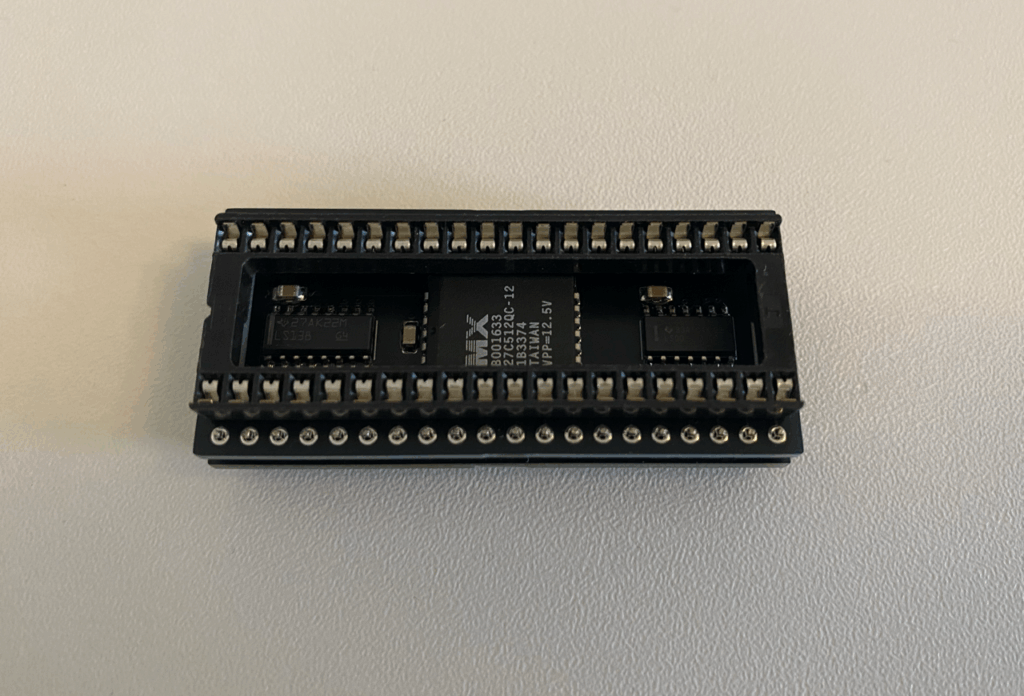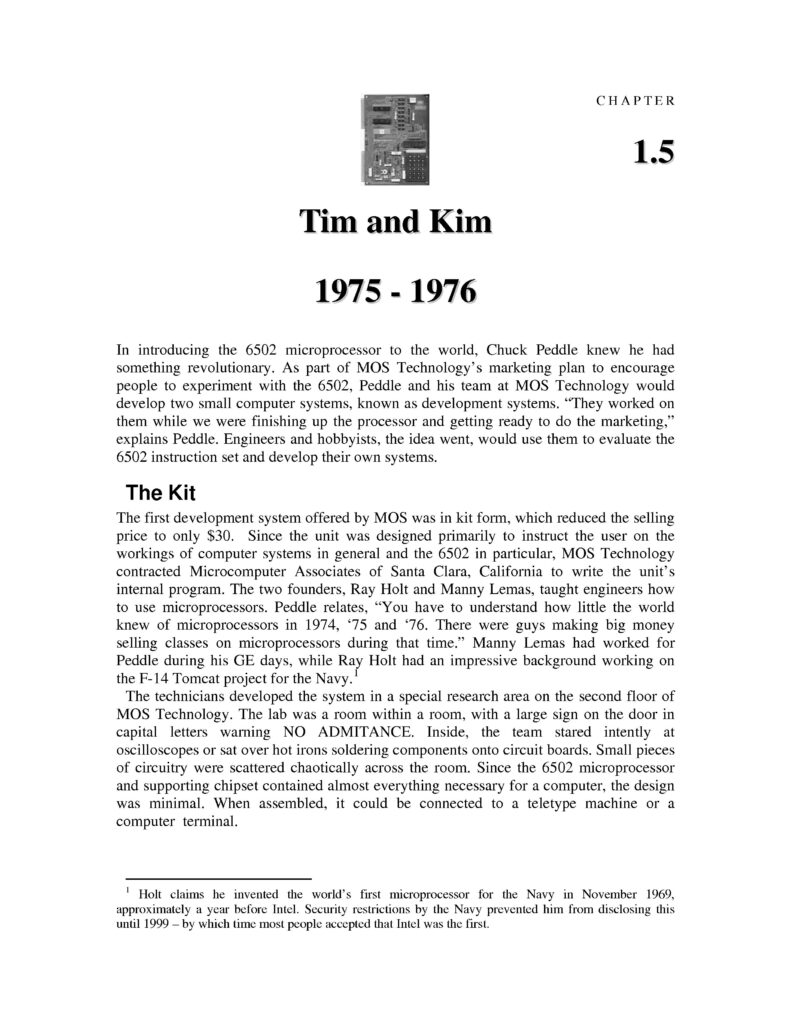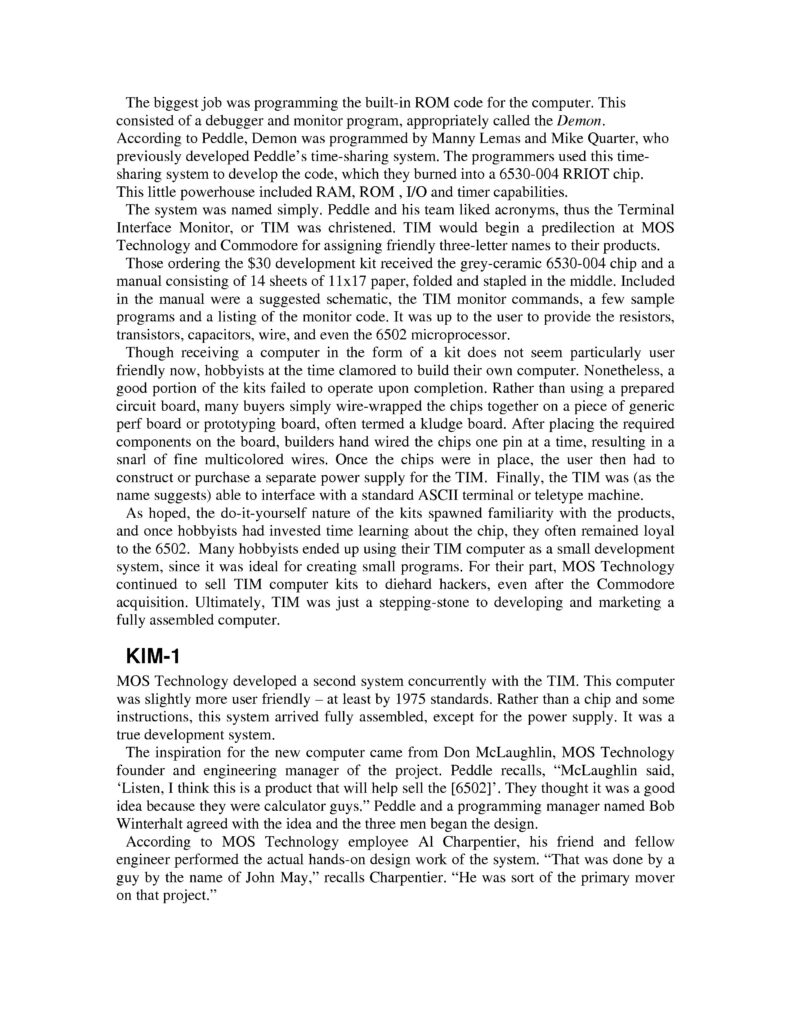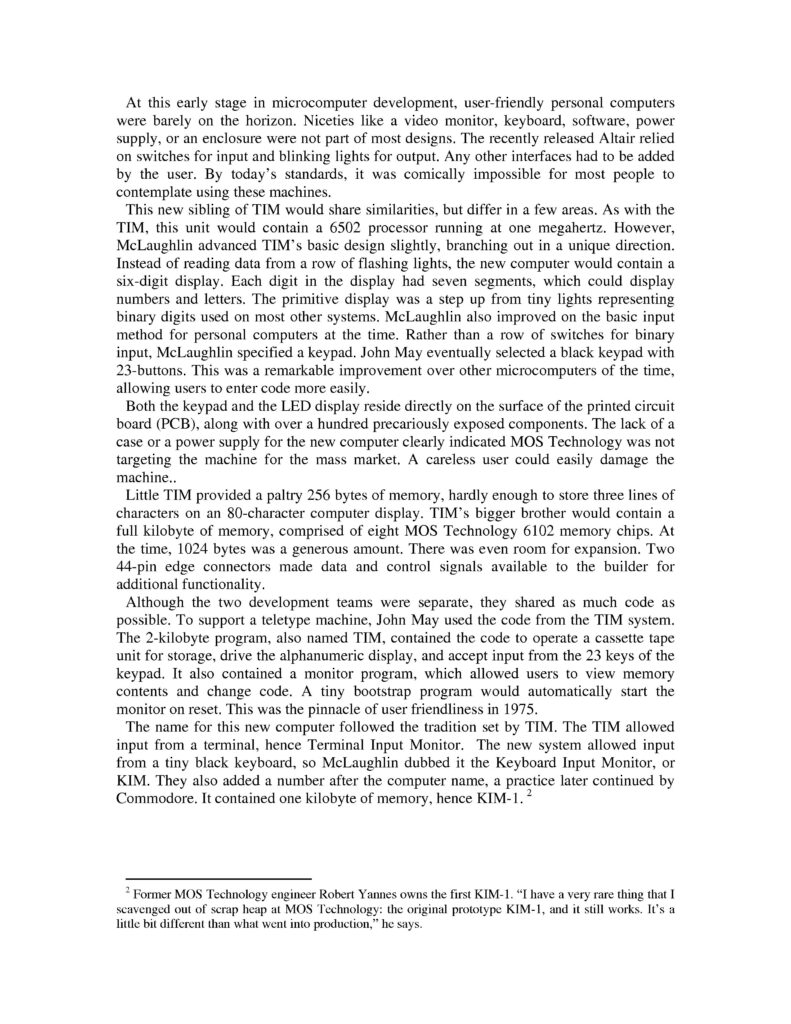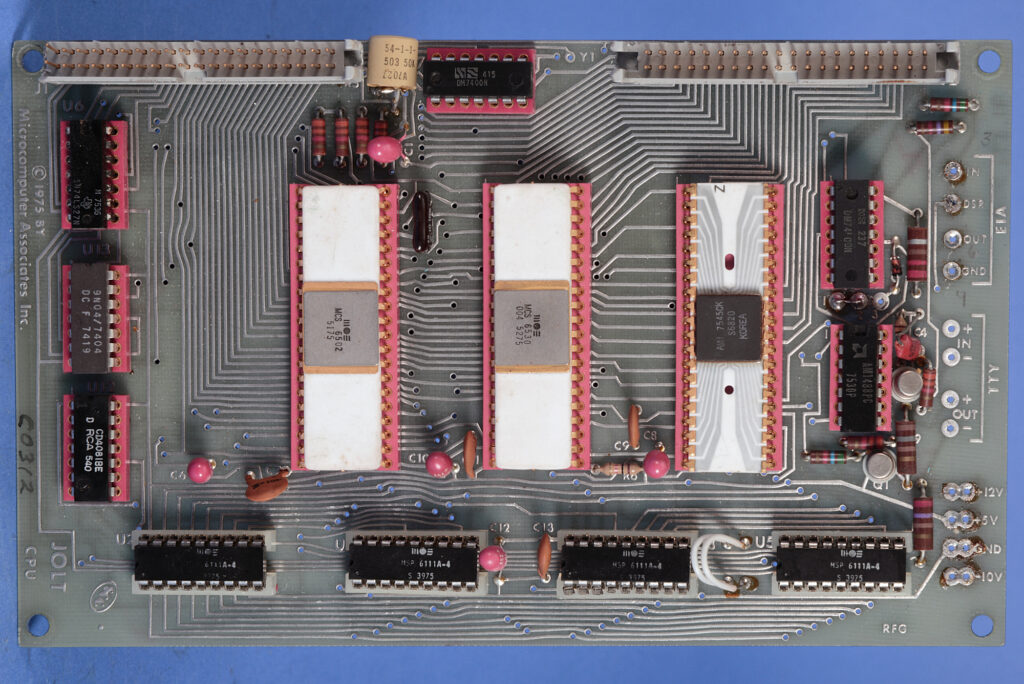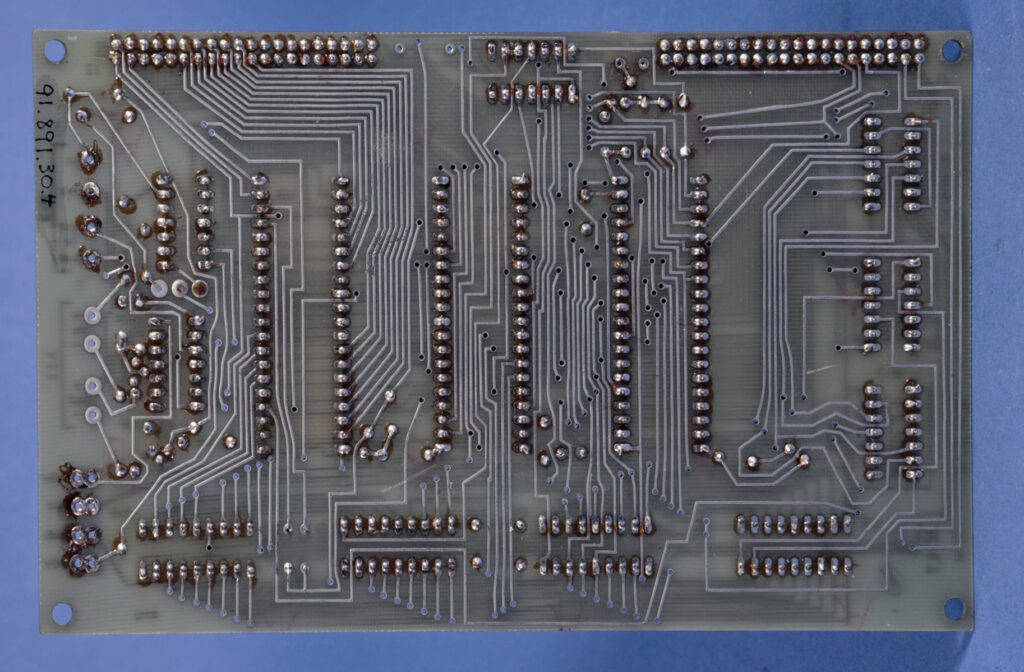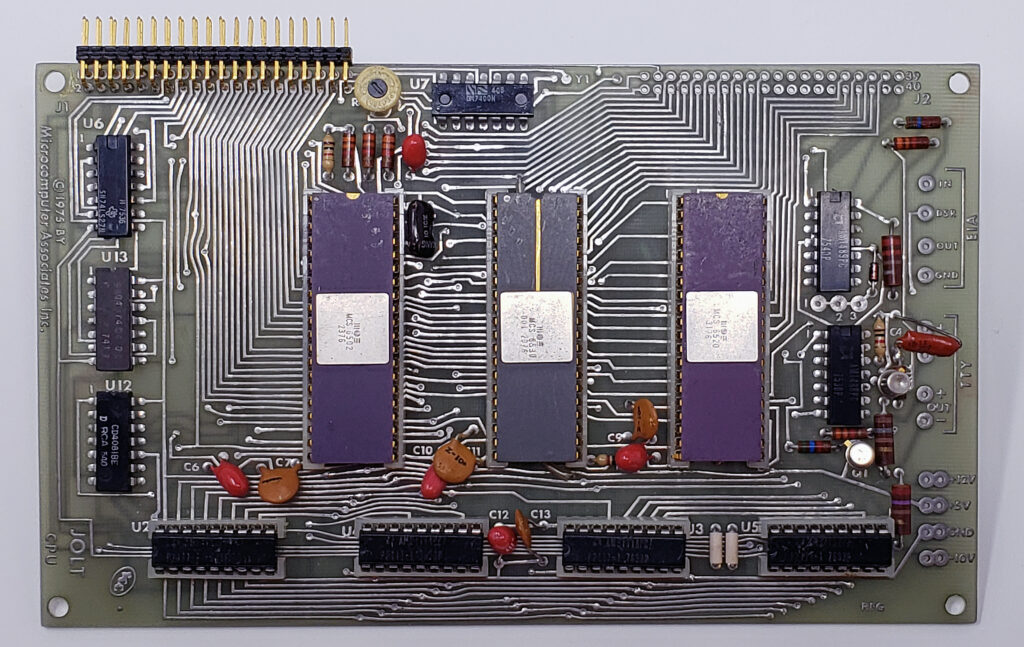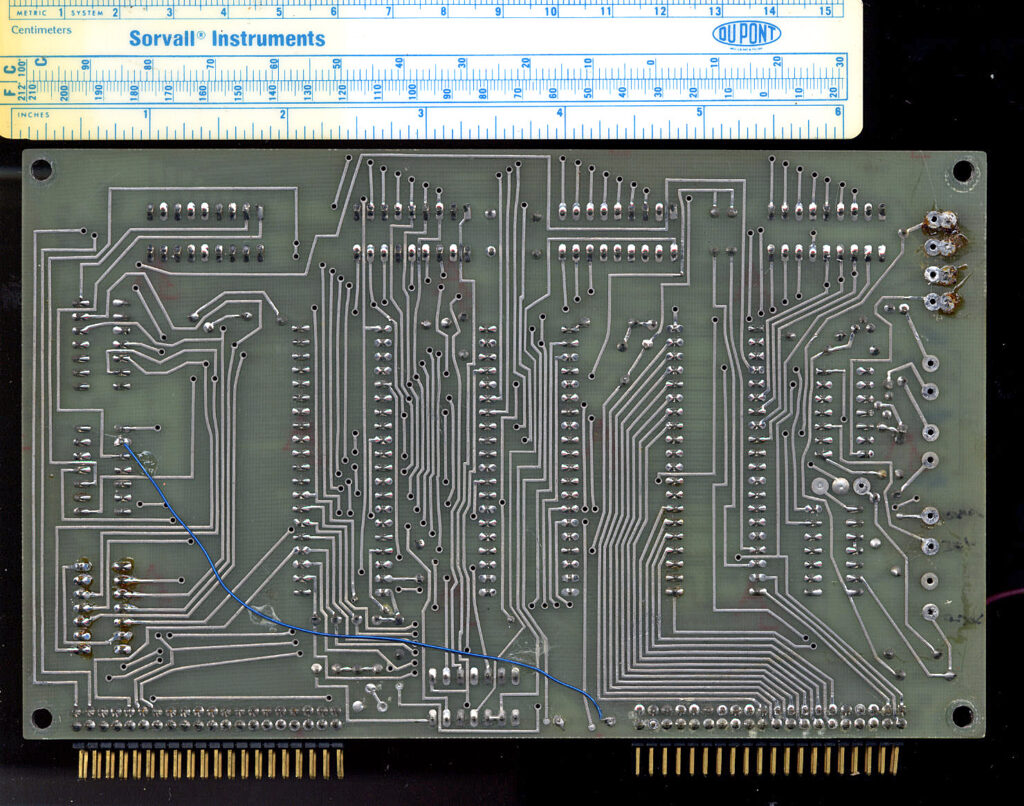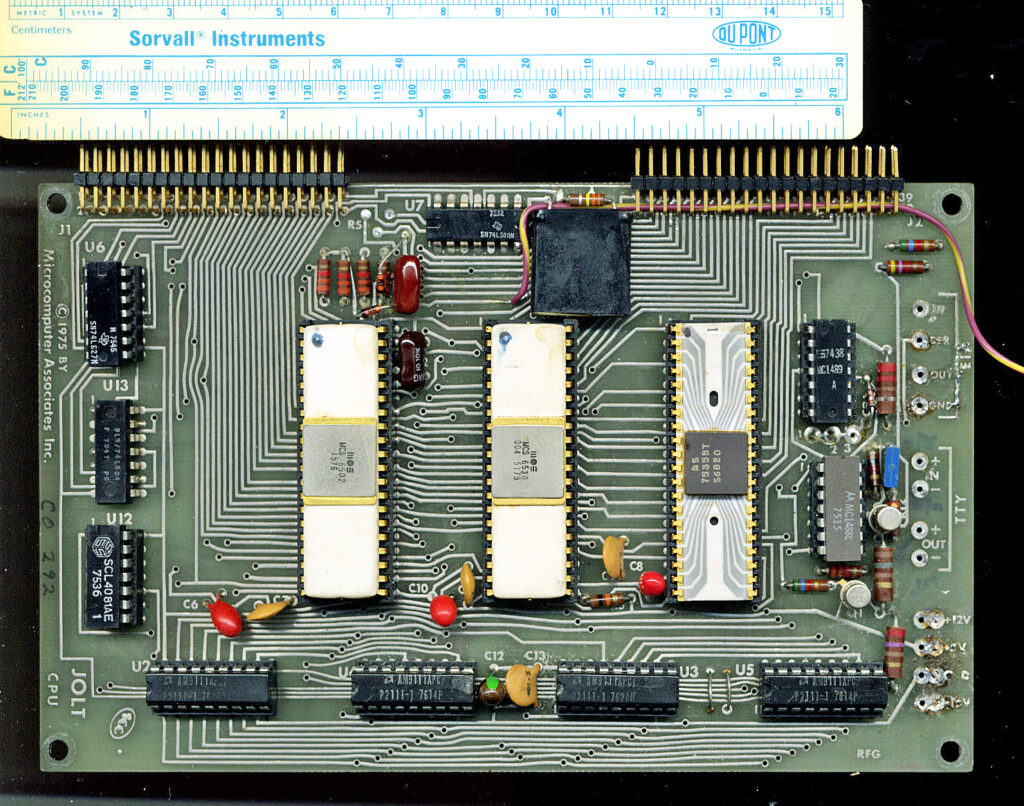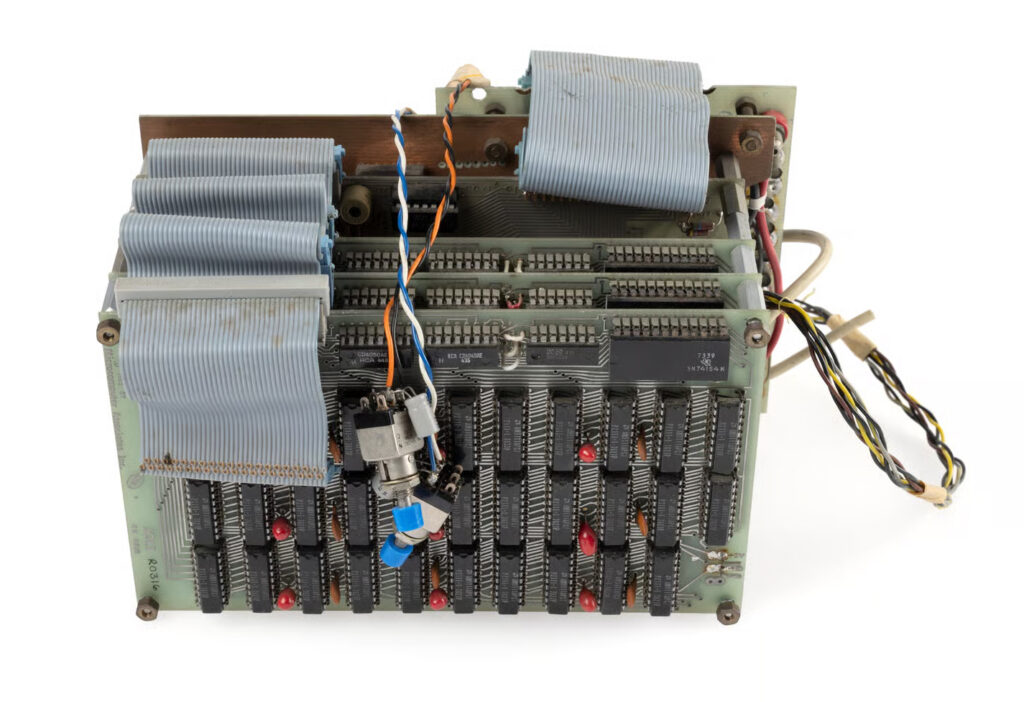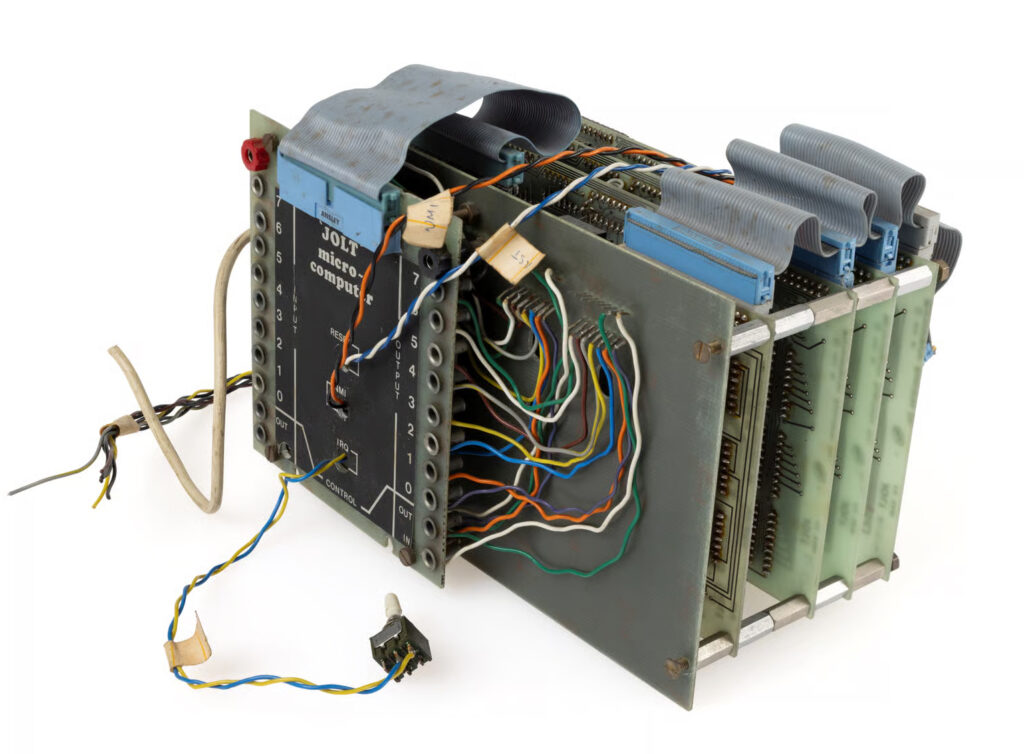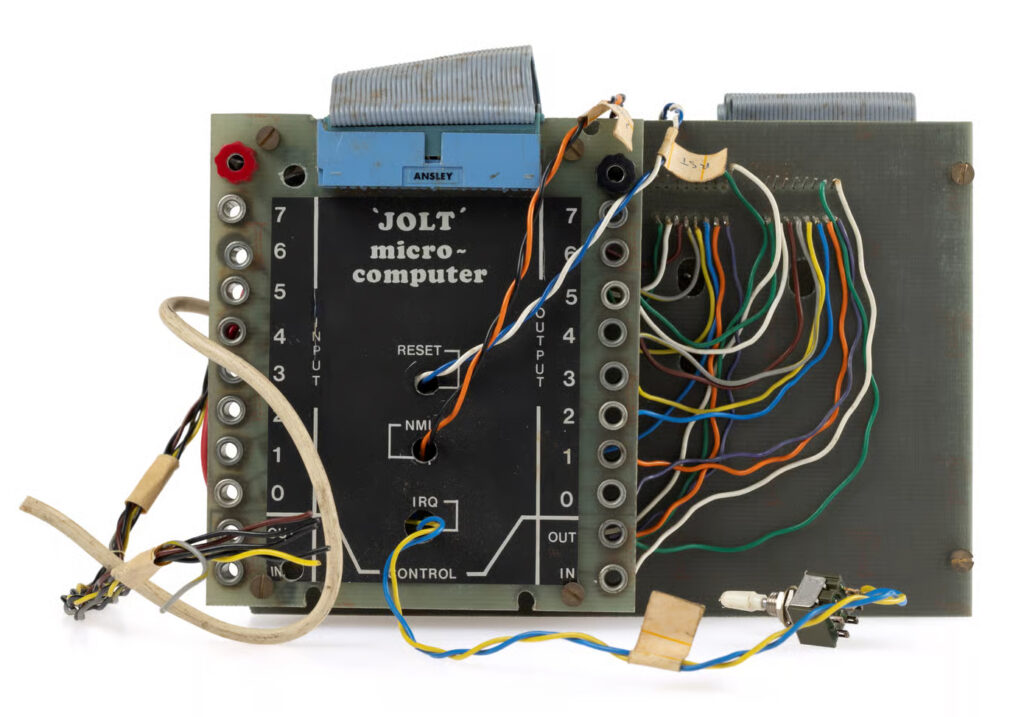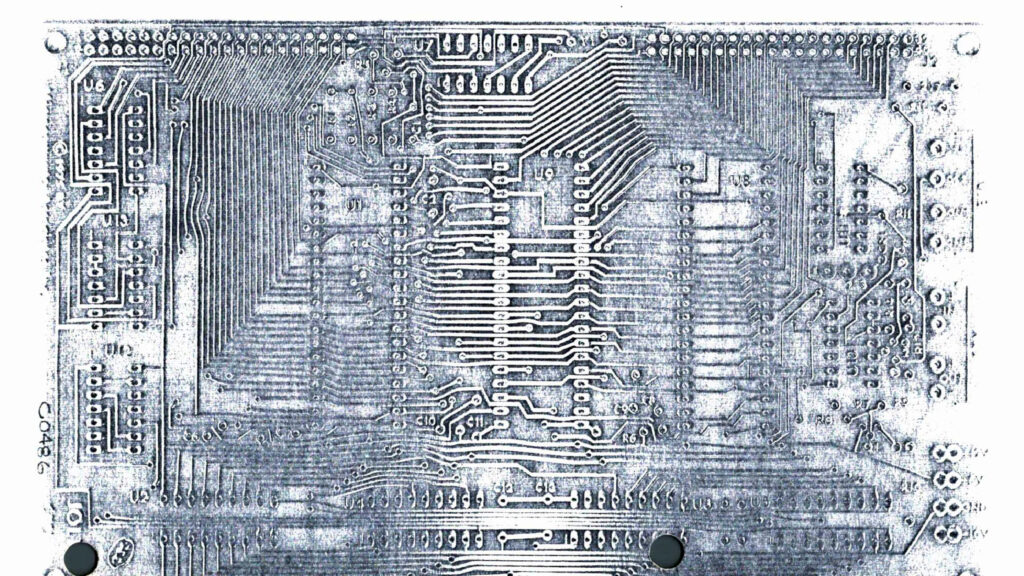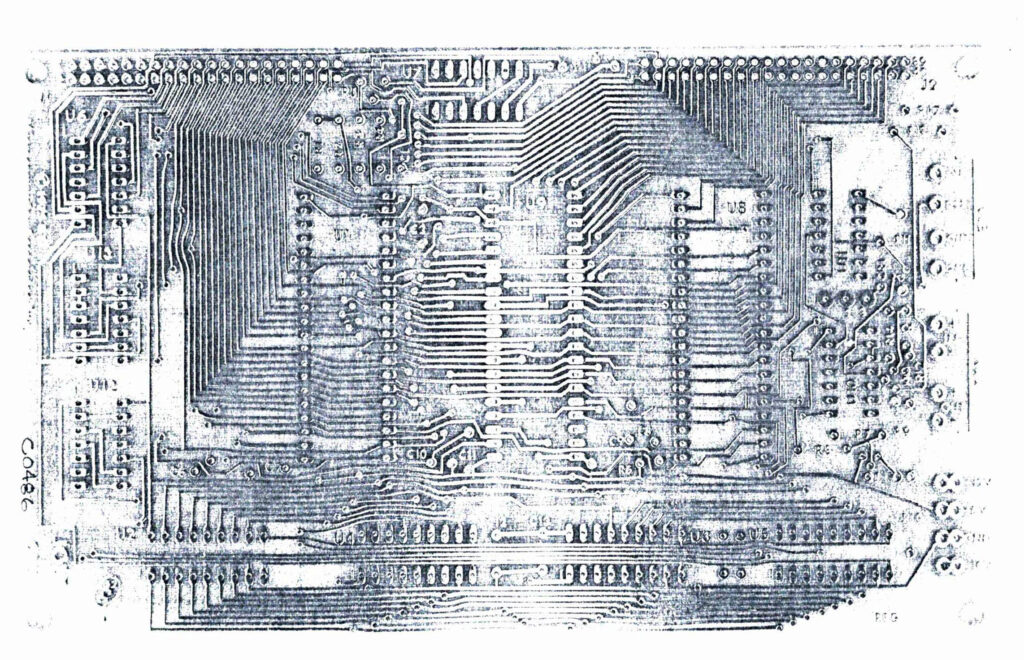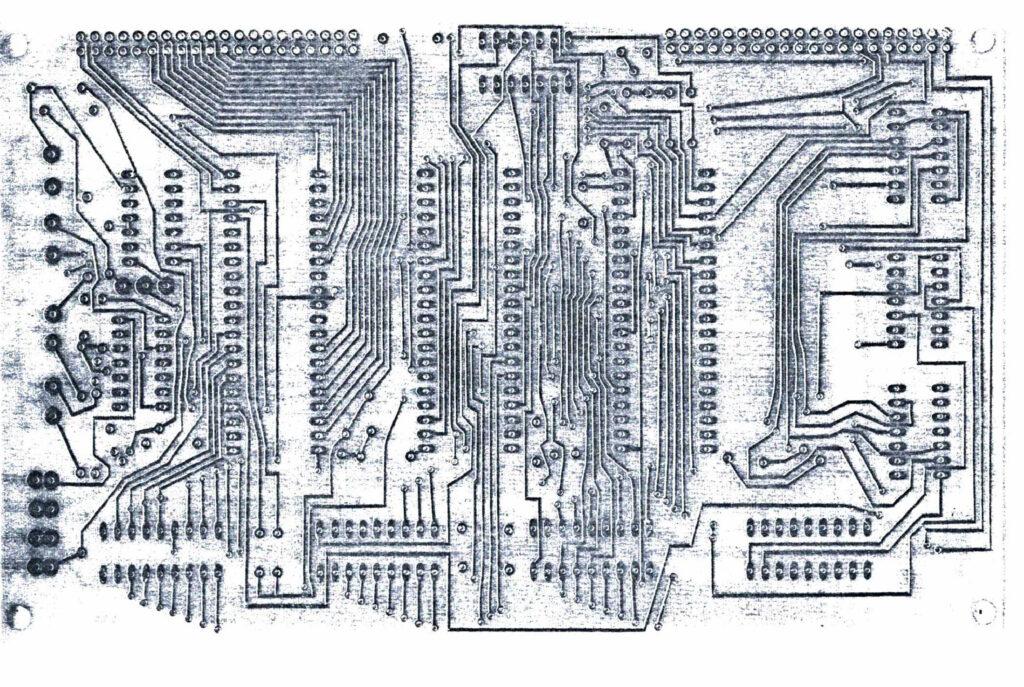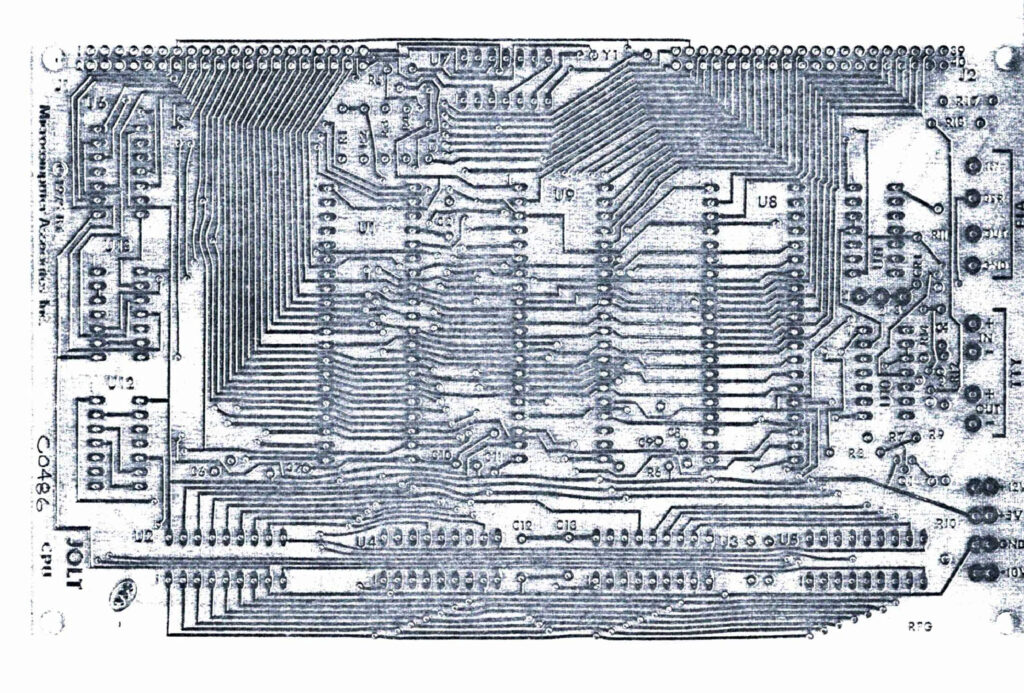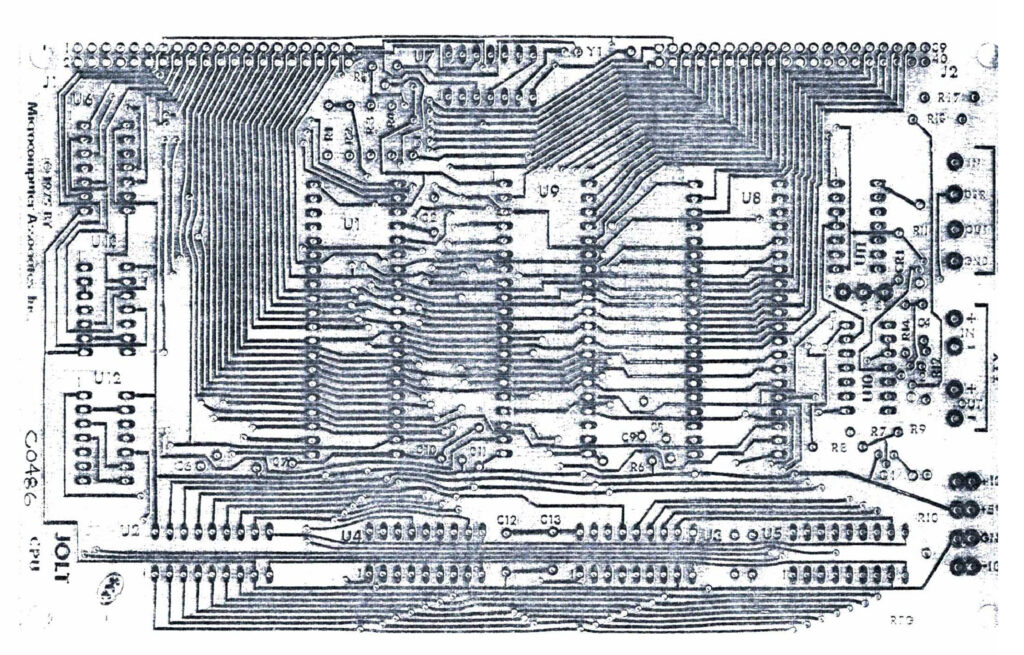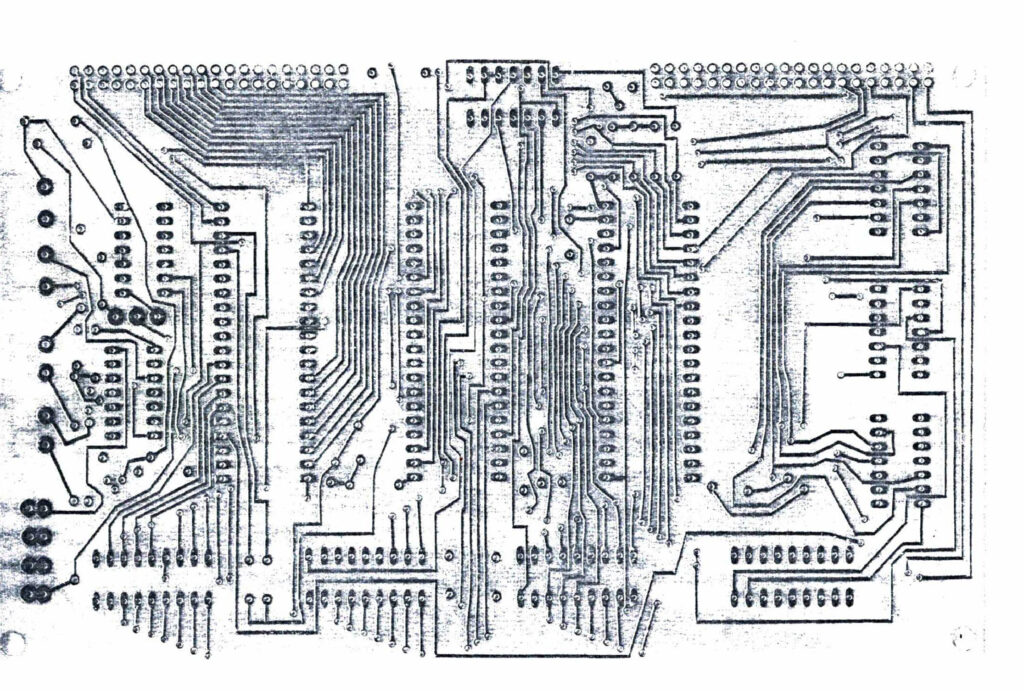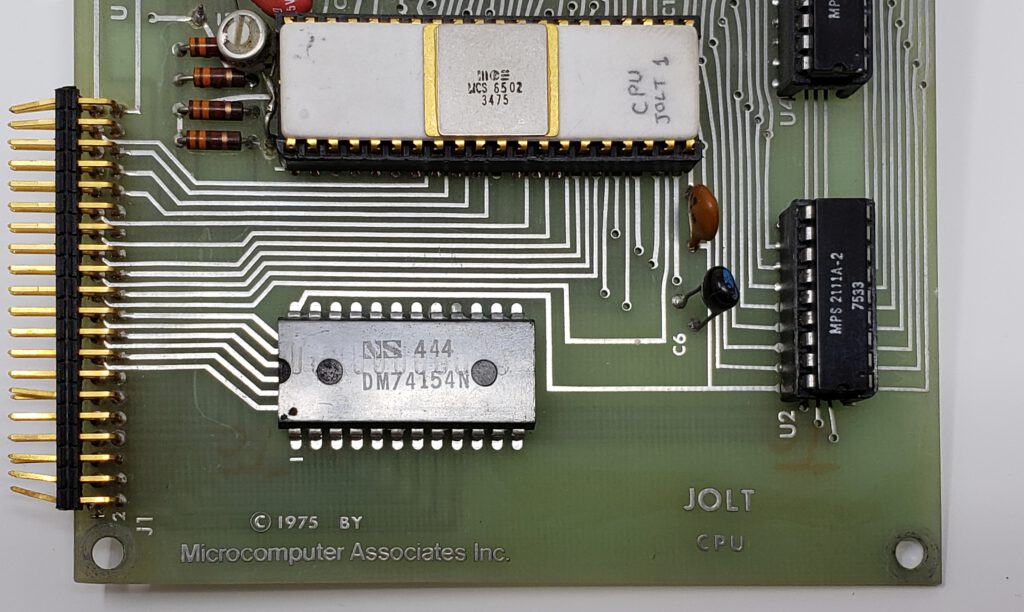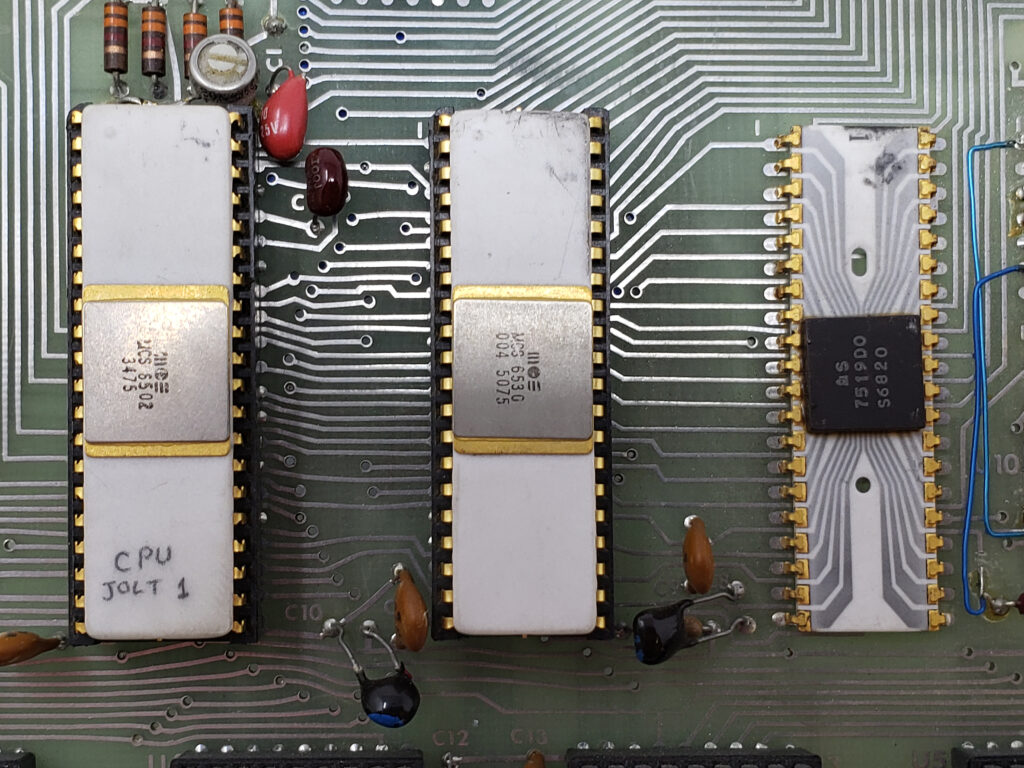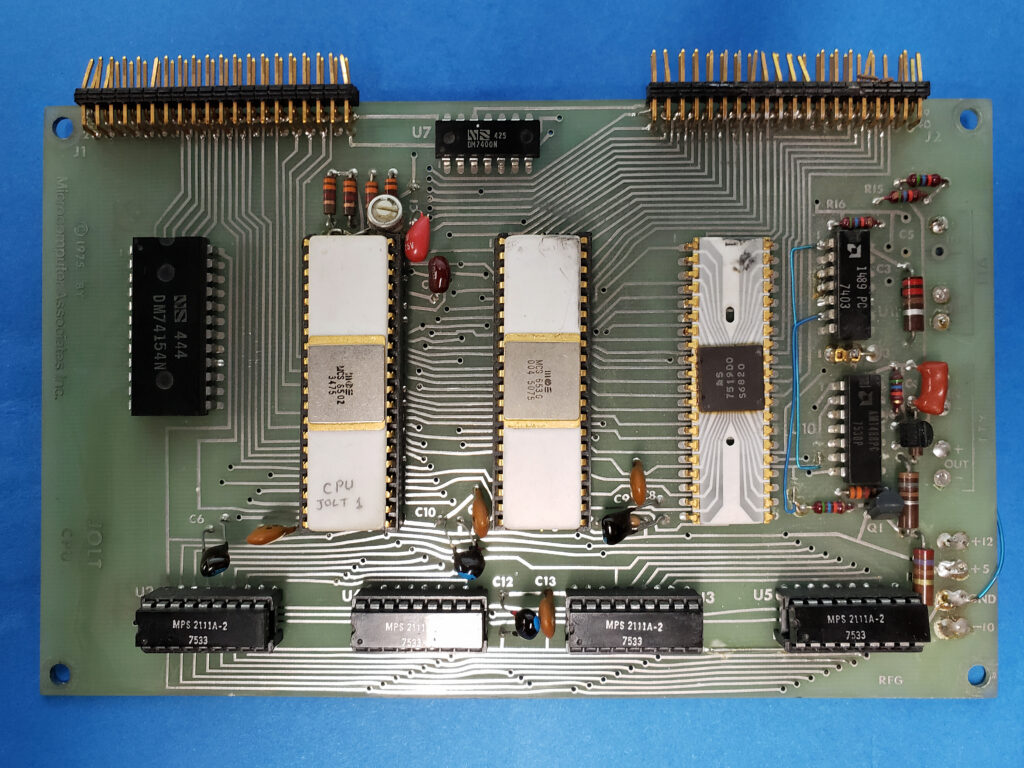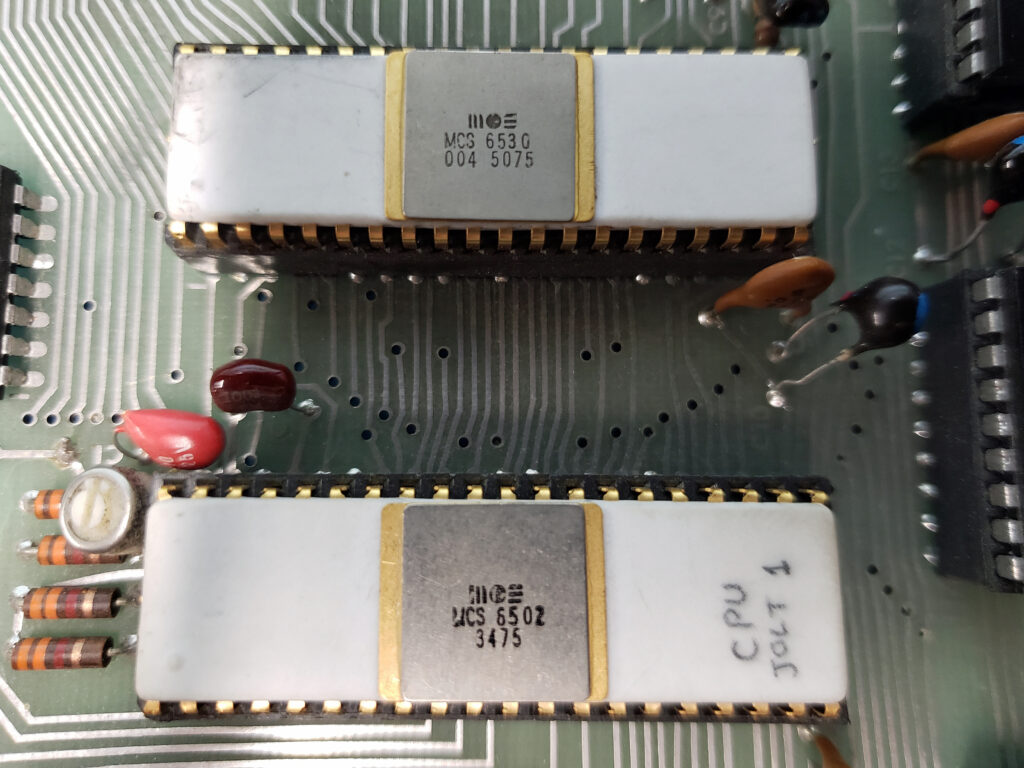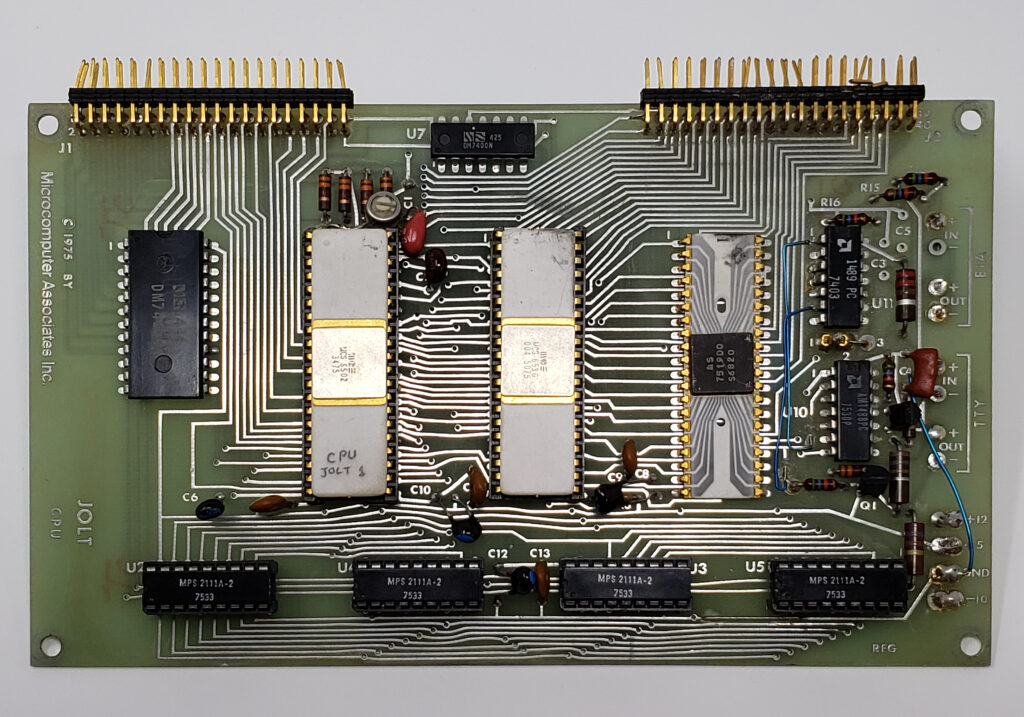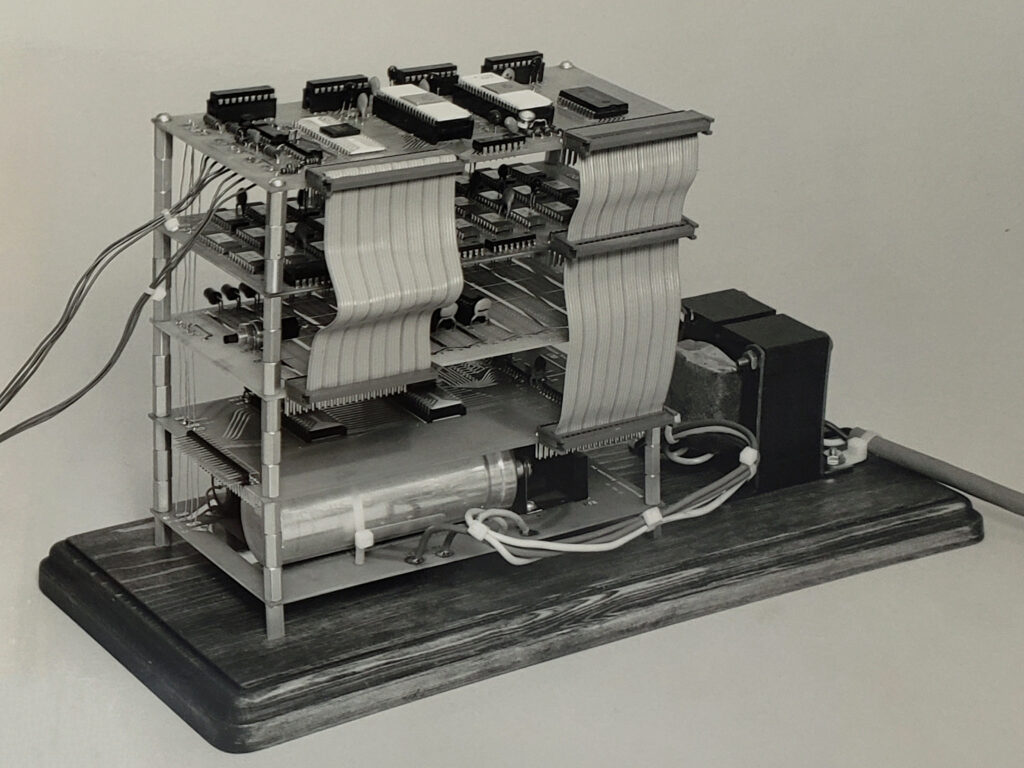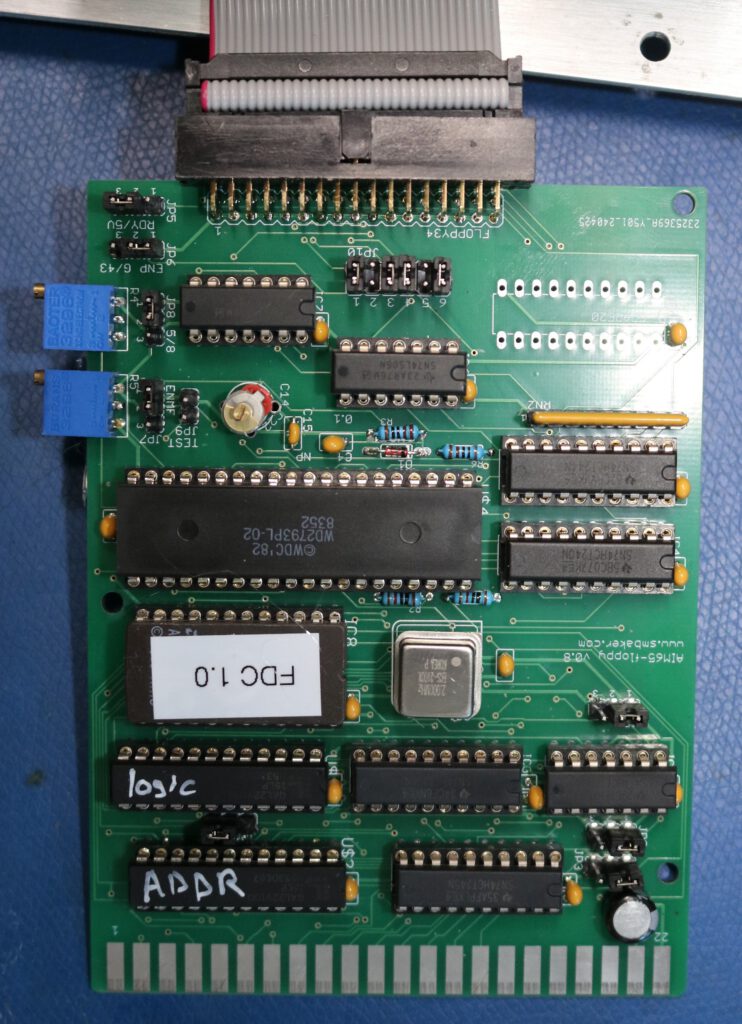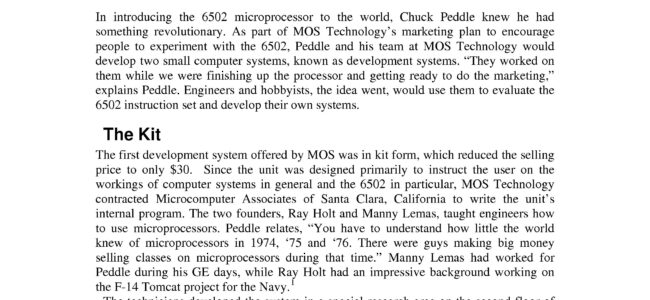
Category Archives: 6502

Jolt software
On this page software for the TIM is described.
– DEMON
– Tiny Basic ad Resident Assembler Program
– Focal-65 V3D
– adaptations to Jolt sofware by Scott LaLombard
– Jolt/Superjolt/TOM simulator
DEbug MONitor (the program in the TIM 6530-004)
The JOLT CPU card comes complete with DEMON, MAl’s debug monitor program. The program is located in the 1,024 byte, Read Only Memory (ROM) of the multi-function 6530 chip and is therefore
completely protected against any alteration. DEMON provides a permanently available general purpose monitor program to aid users in developing hardware and software for MAl’s JOLT series of microcomputers.
DEMON’s Features Include:
• Self adapting to any terminal speed from 10-30 cps,
• Display and Alter CPU registers,
• Display and Alter Memory locations,
• Read and Write/Punch hexadecimal formatted data,
• Write/Punch BNPF format data for PROM programmers,
• Unlimited breakpoint capability,
• Separate non-maskable interrupt entry and identification,
• External device interrupts directable to any user location or defaulted to DEMON recognition,
• Capability to begin or resume execution at any location in memory,
• Completely protected, resident in Read Only Memory,
• Capability to bypass DEMON entirely to permit full user program
control over system,
• High speed 8-bit parallel input option, and
• User callable I/O subroutines.
DEMON’s Command Set Includes:
.R Display registers (PC,F,A,X,Y,SP)
.M ADDR Display memory (8 bytes beginning at ADDR)
: DATA Alters previously displayed item
.LH Load hexadecimal tape
.WB ADDR1 ADDR2 Write BNPF tape (from ADDR1 to ADDR2)
.WH ADDR1 ADDR2 Write hexidecimal tape (from ADDR1 to ADDR2)
.G Go, continue execution from current PC address
.H Toggles high-speed-reader option (if it is on, turns it off; if off, turns on)
See the TIM manual for more information on DEMON, the name MAI uses for the TIM program.
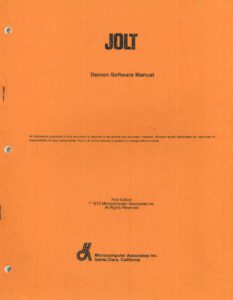 |
DEMON software manual (this manual has an alternative listing of the TIM 6530-004 monitor) |
RAP — 1.75K Byte Resident Assembler Program
(This looks like a predecessor of the RAE of the SYM-1). The JOLT Resident Assembler Program (RAP) is designed for use on JOLT systems equipped with at least 4K bytes of RAM memory. RAP has some significant advantages over conventional assemblers:
1. Resident as part of the JOLT system on PROM chips. The assembler never has to be read into volatile memory before use. It, just like the DEMON monitor, is instantly available. In addition, costly time sharing services are not needed for cross assemblies.
2. Operates on one pass of the source code. The source tape is read in only once, thereby increasing assembler speed by a factor of two over conventional assemblers that make two or three passes over the source code.
3. Small in size. The assembler is smaller by a factor of 4 or 5 over comparable assemblers. Its size guarantees the smallest number of PROM chips needed and minimizes printed circuit board space requirements. With the assembler PROM chips installed in your JOLT PROM board (at address E800 hex), the assembler may be activated by reading the source code input on the console input device and transfering to location E800 hex using the DEMON monitor. As source code is being read in, a listing is produced on the console printer and the object code is generated directly into RAM at the addresses specified by the origin directive (.ORG).
After the assembly is complete, the object code may be punched onto paper tape or executed directly using DEMON. The assembler assumes RAM at locations 1FFF hex and lower to be available for symbol table usage. RAP uses an efficient symbol table algorithm and users can normally expect that about 4 to 6 bytes of RAM will be used for each symbol or that a 3000 byte program would use approximately 800 bytes for the entire symbol table (locations 1CEO to 1FFF hex). This space need not be left unused if buffers,’ etc. are allocated to it. The Resident Assembler Program is compatible with the MAS Technology Cross Assembler with the following exceptions:
1. Expressions and * (used for current program counter) are not allowed.
2. Thee .OPT and .PAGE pseudo operations are not implemented.
3. Octal and binary numbers are not implemented.
4. .ORG is used instead of *= to origin program.
5. .RES is used for reserving storage.
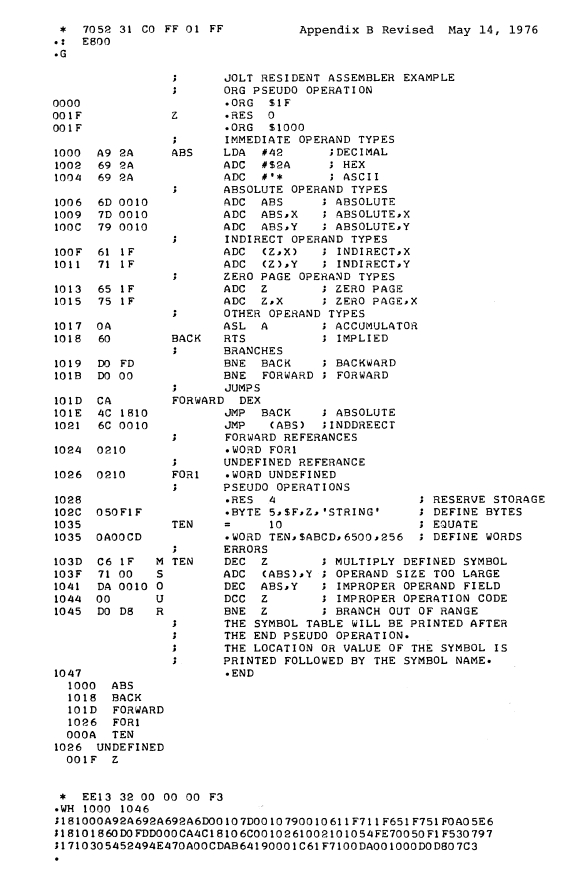
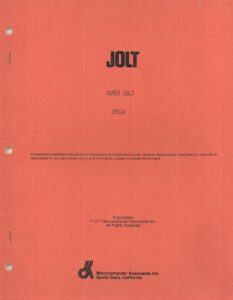 |
Superjolt CP110 User Manual Contains Tiny Basic, RAP userguide |
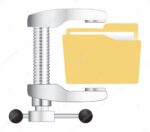
| RAP and Tiny basic ROMS |
FOCAL
See the FOCAL065 V3D page for a TIM version of the FOCAl language.
Scott LaLombard software
While building a Jolt replica with many expansion boards. Scott Lalombard adapted some software like Tiny Basic. Read about his programs here.
TIM/Jolt Simulator
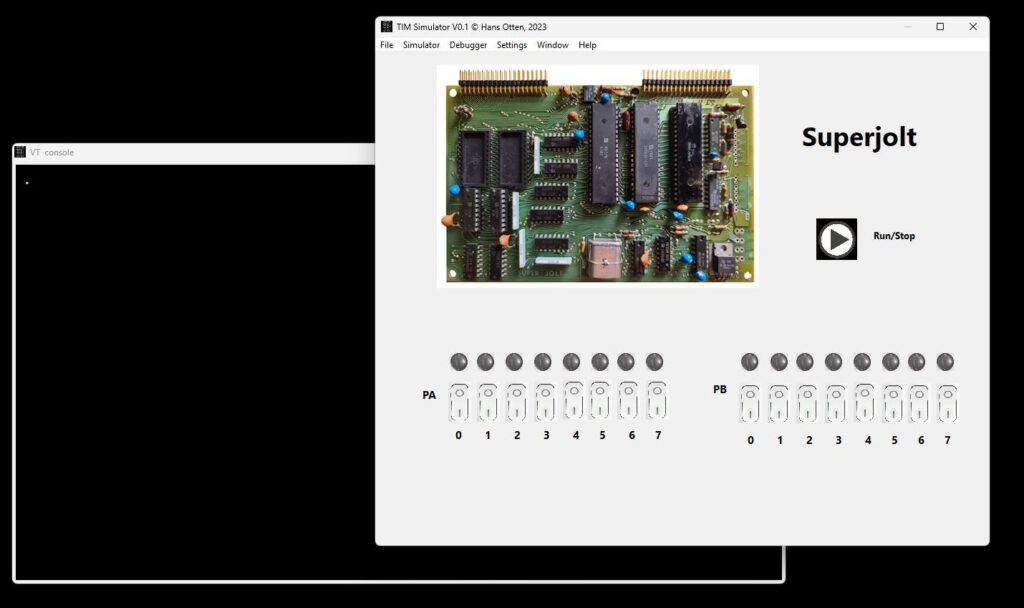
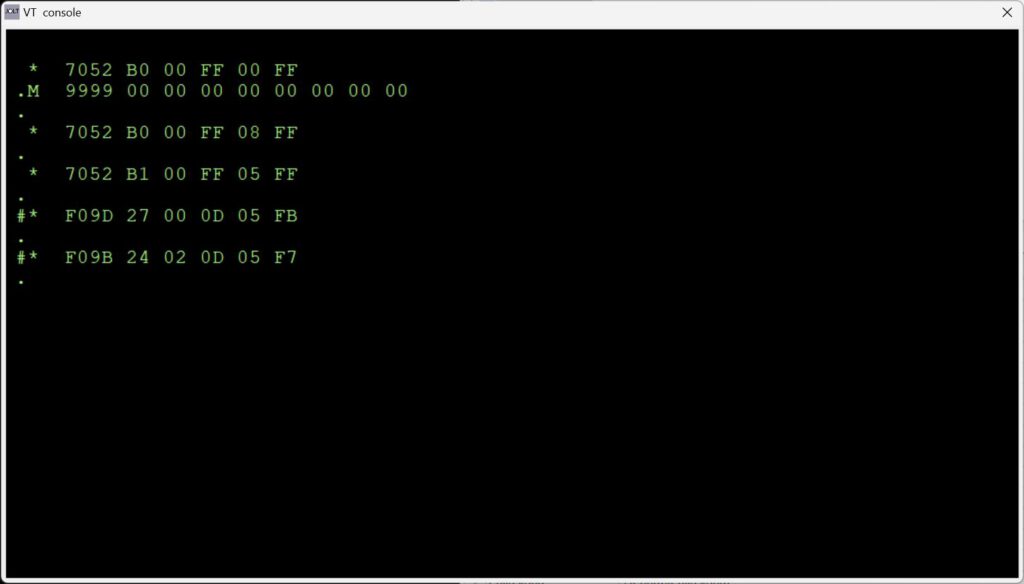
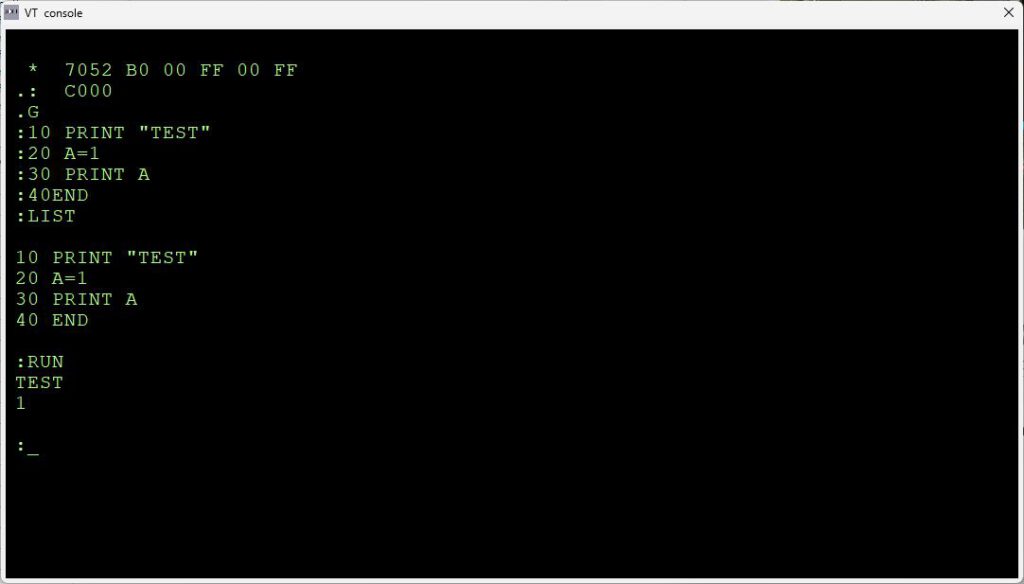
A Jolt/Superjolt/TIM simulator.
See also:
History of the TIM in the Jolt
Images of the Jolt
A Jolt Replica
SM Baker AIM 65 projects
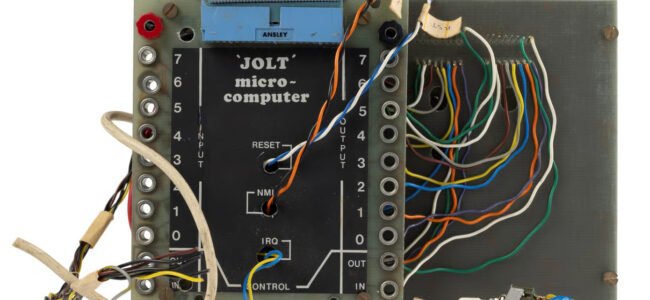
Images of the Jolt
Above photos by The National Museum of American History.
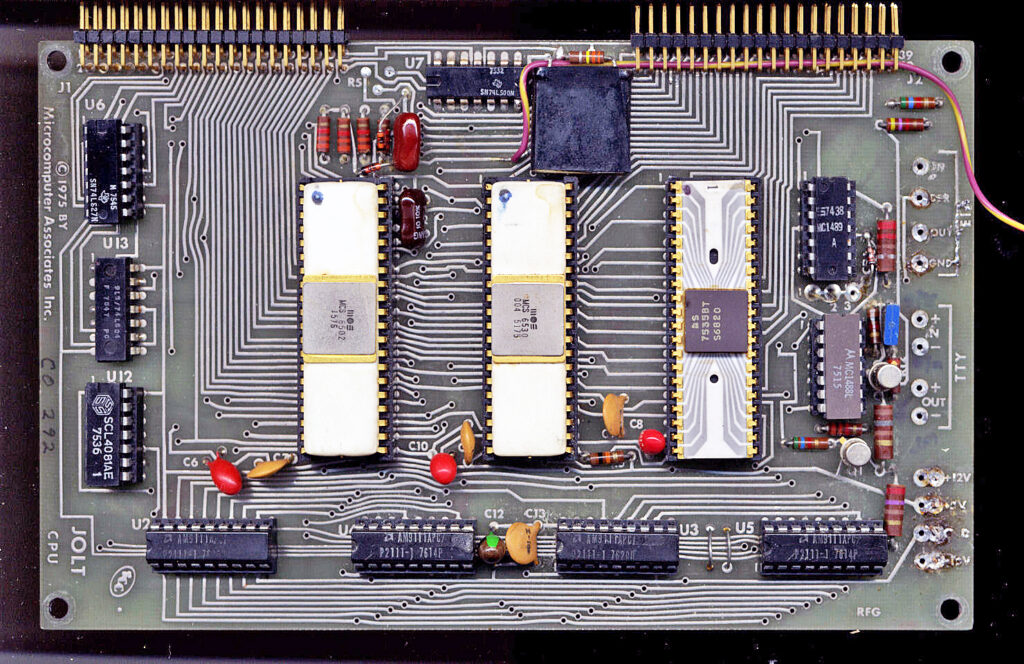
Photos from https://vintagecomputer.net/MAI/
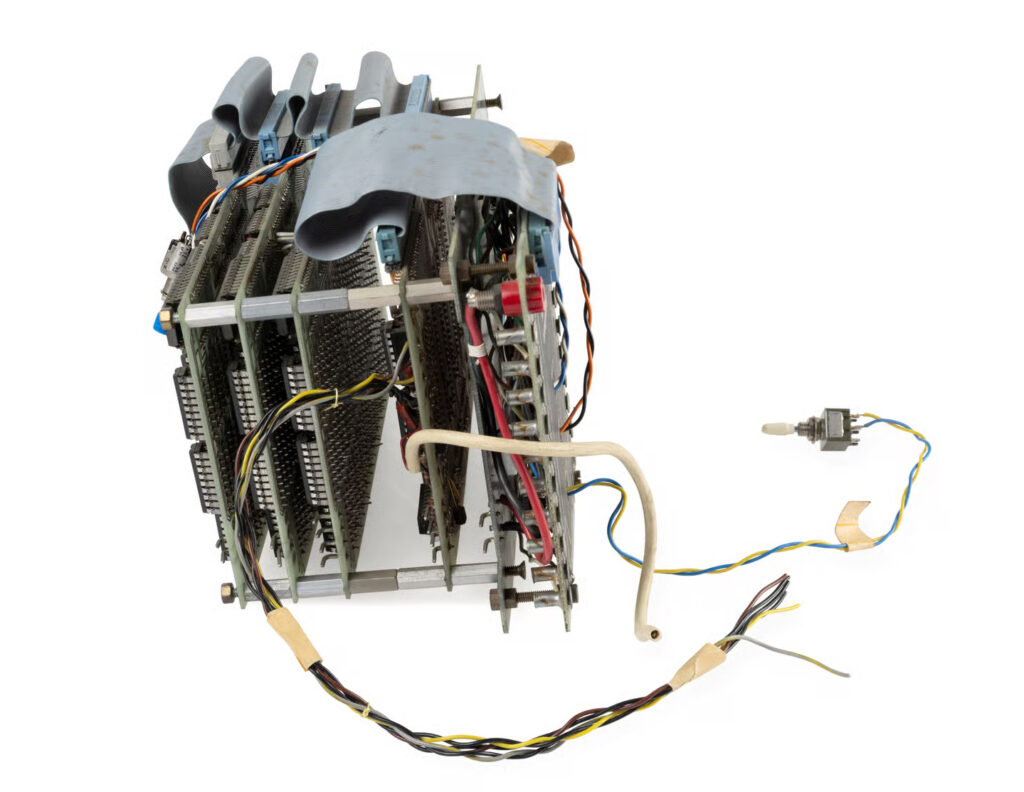
Photos from https://collection.powerhouse.com.au/object/372464
Board images thanks to Achim Harald Baqué and mister-freeze/snuci.
See also:
History of the TIM in the Jolt
A Jolt Replica
SM Baker AIM 65 projects
KIM 6530 replacement board
Jolt with a 74154 decoder
The early Jolts were equipped with a 74154 decoder for the glue logic instead of the 74LS00/04/27 of the later and more common model.
Here photos by Ray Holt (the hardware designer) of such a Jolt.
See also:
History of the TIM in the Jolt
Images of the Jolt
A Jolt Replica
SM Baker AIM 65 projects
AIM 65 other hardware page added
For the AIM 65 it was not only Rockwell that produced hardware like video,serial and FDC cards, others also amde hardware for the AIM 65.
I have a page devoted to AIM 65 hardware with new photos, updated and cleaned up documents:
– Comelta S.A. Spain RAM and ROM cards
– Cubit
– Rhines and CRT2 Video
– MTU Micro Technology Unlimited expansions for the AIM 65
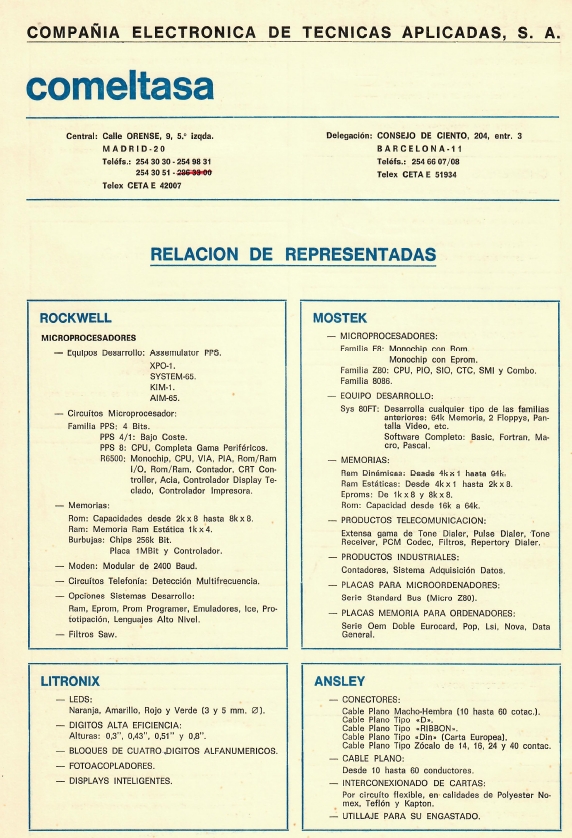
And some modern expansions:
SM Baker remakes of video and FDC and bus cards.
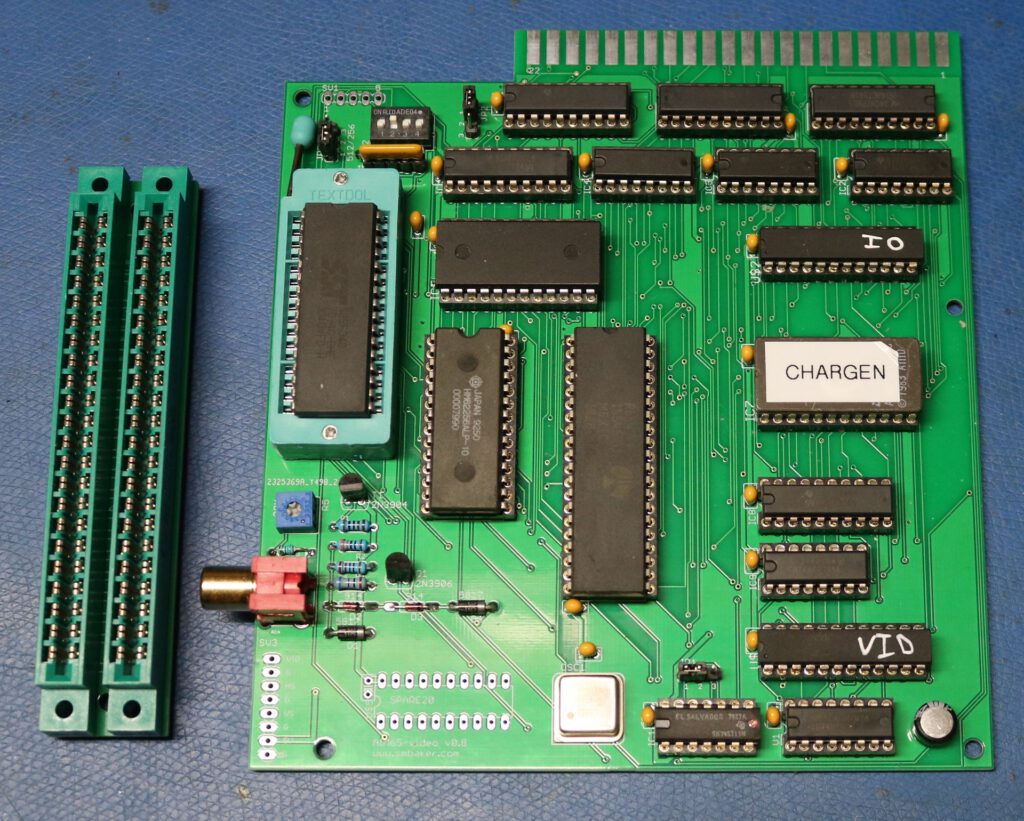
See also:
KIM-1 connectors: beware the Chinese cheap variants!
Magazines: Compute! and Compute II
All documents in the MTU pages are now clean and higher quality, about 50 new PDFs.
Focal-65 V3D for TIM and KIM-1
KIM-1 Marquee
This has been waiting some time to be published.
Udo Juerss wrote in 2024 a program KIM-1 Marquee to display running text wit a near complete alphabet on a KIM-1 or clone LED display.
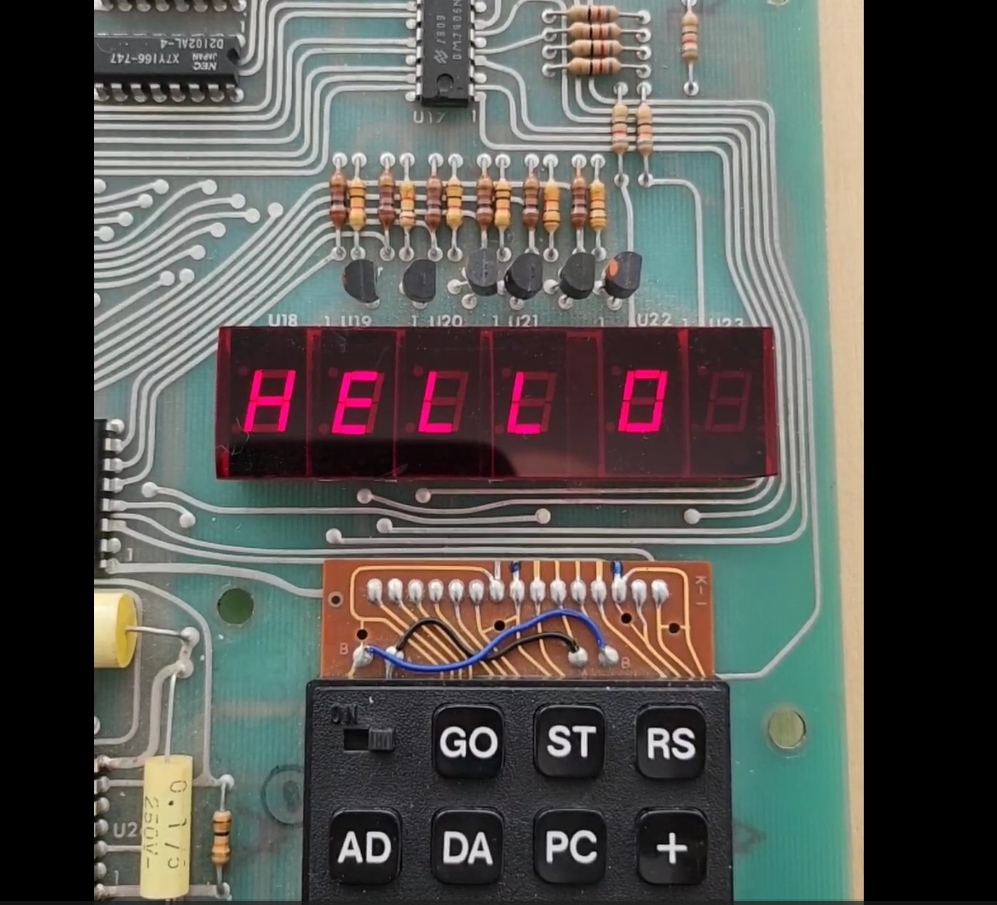
See also:
KIM-1 connectors: beware the Chinese cheap variants!
Magazines: Compute! and Compute II
All documents in the MTU pages are now clean and higher quality, about 50 new PDFs.
Focal-65 V3D for TIM and KIM-1
Jolt replica by Scott LaBombard
Scott LaBombard started many years ago on a replica of the Jolt. Quite a challenge, since only photos are known.
He succeeded in finishing a working replica as shown on this page.
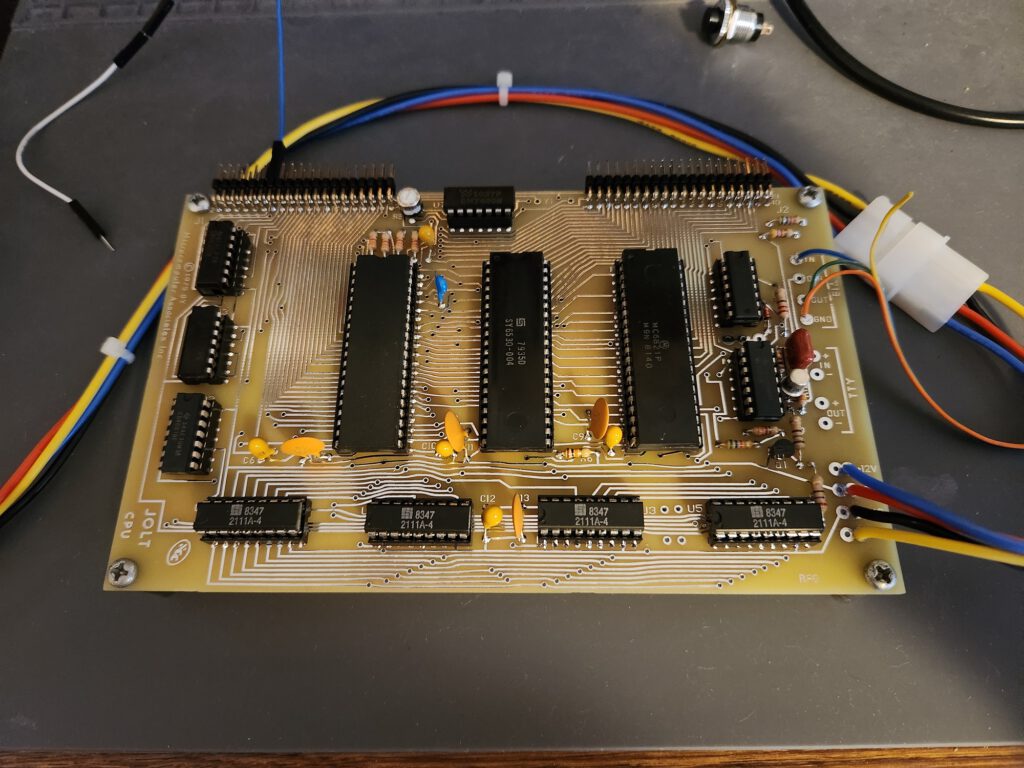
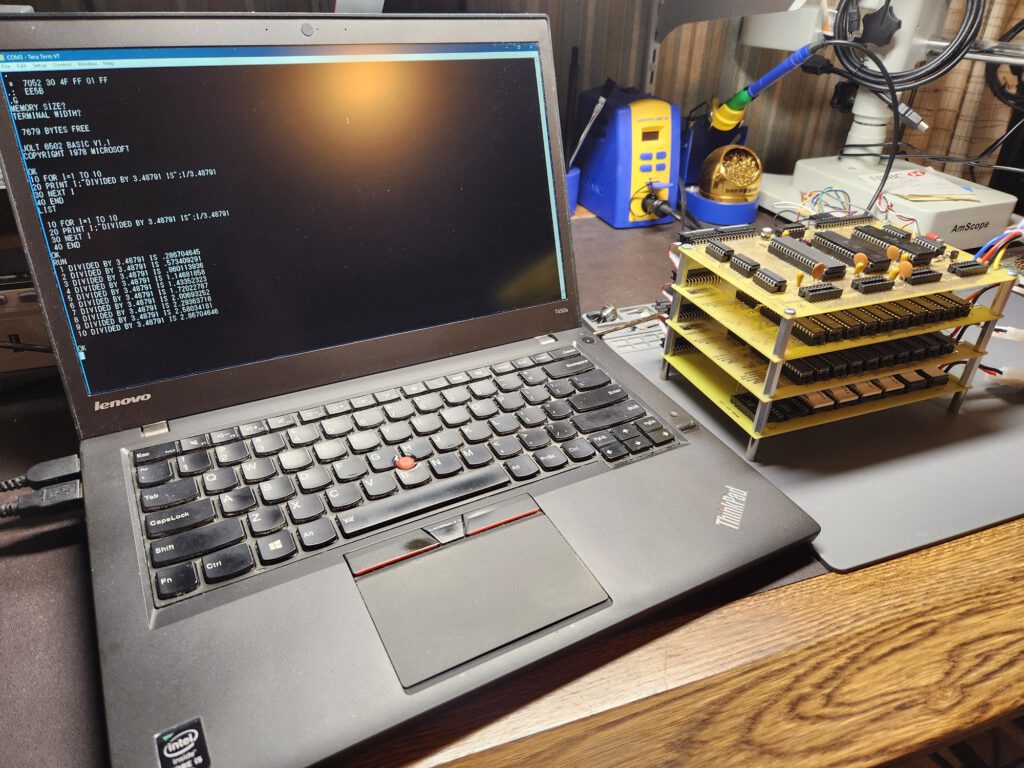
See also:
KIM-1 connectors: beware the Chinese cheap variants!
Magazines: Compute! and Compute II
All documents in the MTU pages are now clean and higher quality, about 50 new PDFs.
Focal-65 V3D for TIM and KIM-1
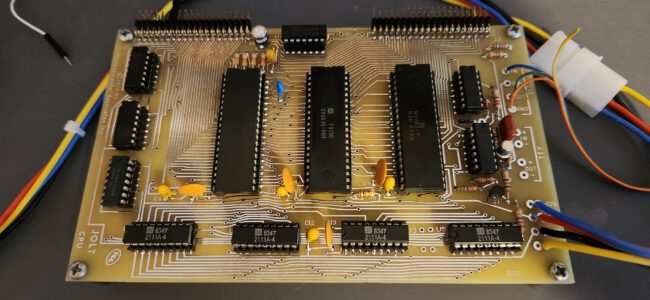
A Jolt Replica
Scott LaBombard started many years ago on a replica of the Jolt. Quite a challenge, since only photos are known.
He succeeded in finishing a working replica as shown in the next photos sent by Scott.
Attached is a picture showing the Jolt ‘stack’ running a late iteration of Microsoft’s 6502 Basic that Scott ‘ported’ to the Jolt. He even have it configured to support integer arrays and extended precision. Also included a picture of a replica of the George Morrow ‘naked’ 4k RAM board that was specifically marketed for Jolt owners back in the day (two are installed in the stack for 8k total). Last, there’s a picture of Scott’s own design of a 16K eprom board based on the mostly period correct 2716 eprom. It is jumper selectable for a base address of $8000 or $C000 (when configured for $C000, it only decodes $C000 – $EFFF because the Jolt decodes $Fxxx). One could install 28K of eprom with two of these boards!
In addition to Microsoft Basic, the eprom board has VTL-2 (Very Tiny Language) that is also ported to the Jolt. And last but not least, the eprom board has MAI’s RAP installed as well.
You may notice some wires hanging off from the J2 connector, that is connected to a ‘high speed tape reader’ that Scott designed specifically for the Jolt. It works directly with the TIM monitor just as documented (using the ‘H’ command to switch to the high speed tape reader, and then ‘LH’ to load ‘tapes’ in MOS Technology hex format). It’s super fast compared to loading via the console.
Scott has also created replicas of the original 2K eprom board that uses the venerable 1702 eproms, as well as the original power supply board.
He also did a replica of a George Morrow Micro-Stuff “Naked” 4K RAM board that was primarily marketed for the Jolt as an alternative to the original Jolt 4K RAM board.
Here an archive with a Tiny Basic Enhancement ROM Scott did. See below for what has been enhanced.
It also runs on the TIM Superjolt Emulator!

The JOLT replica
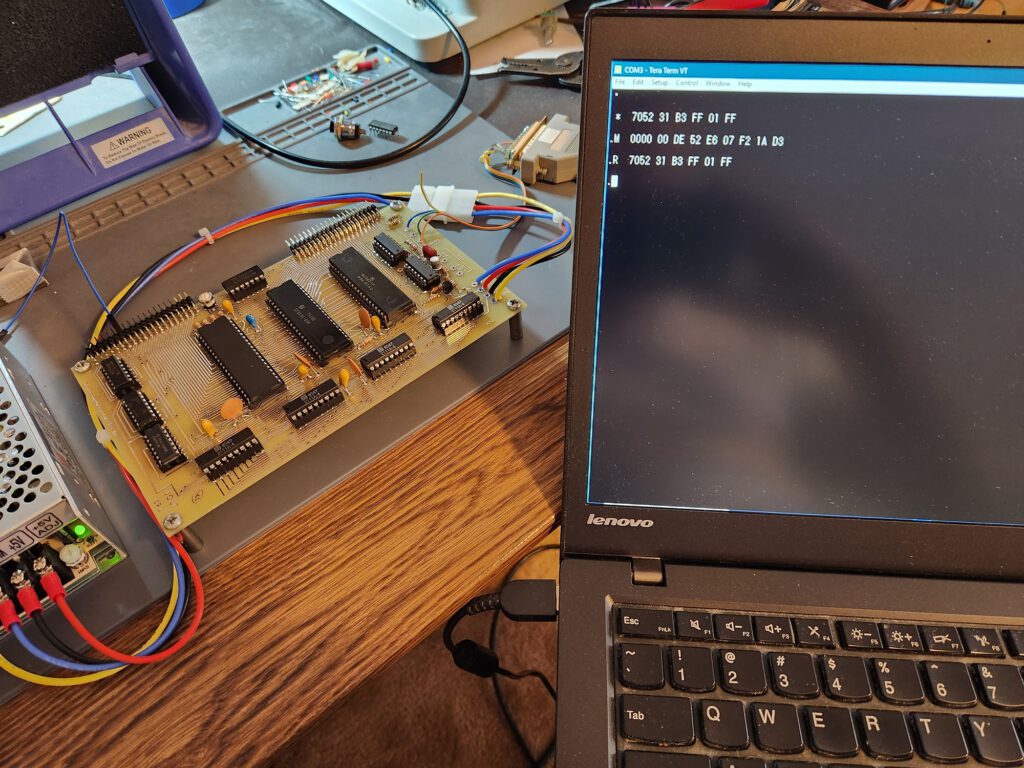

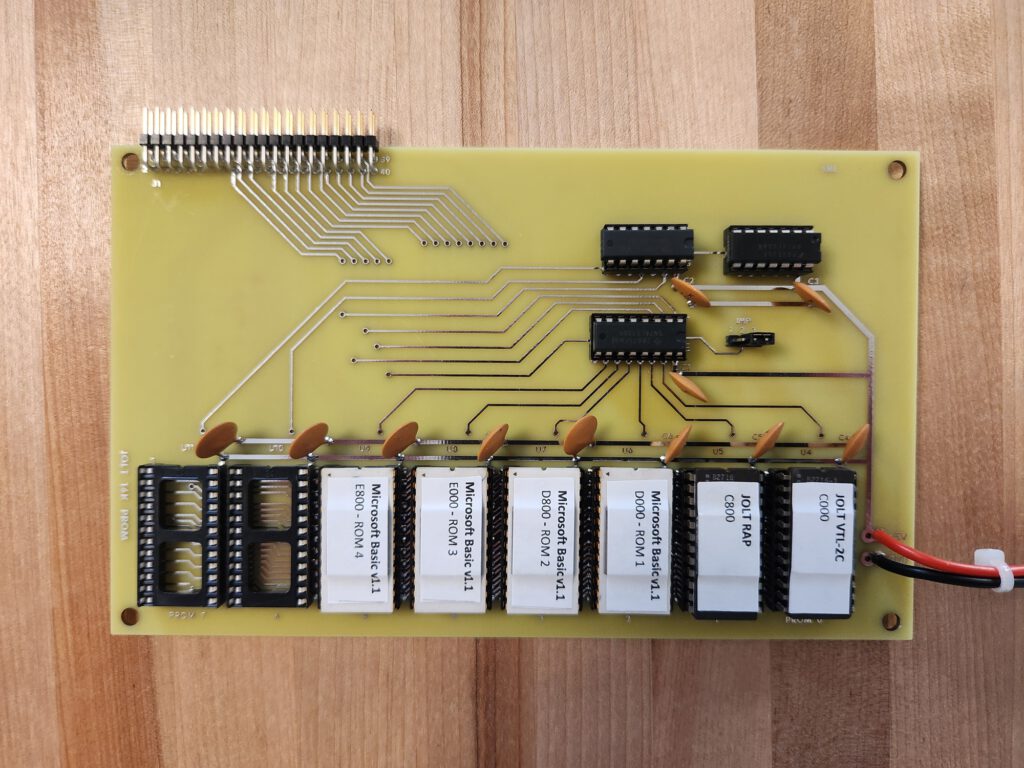
EPROM card
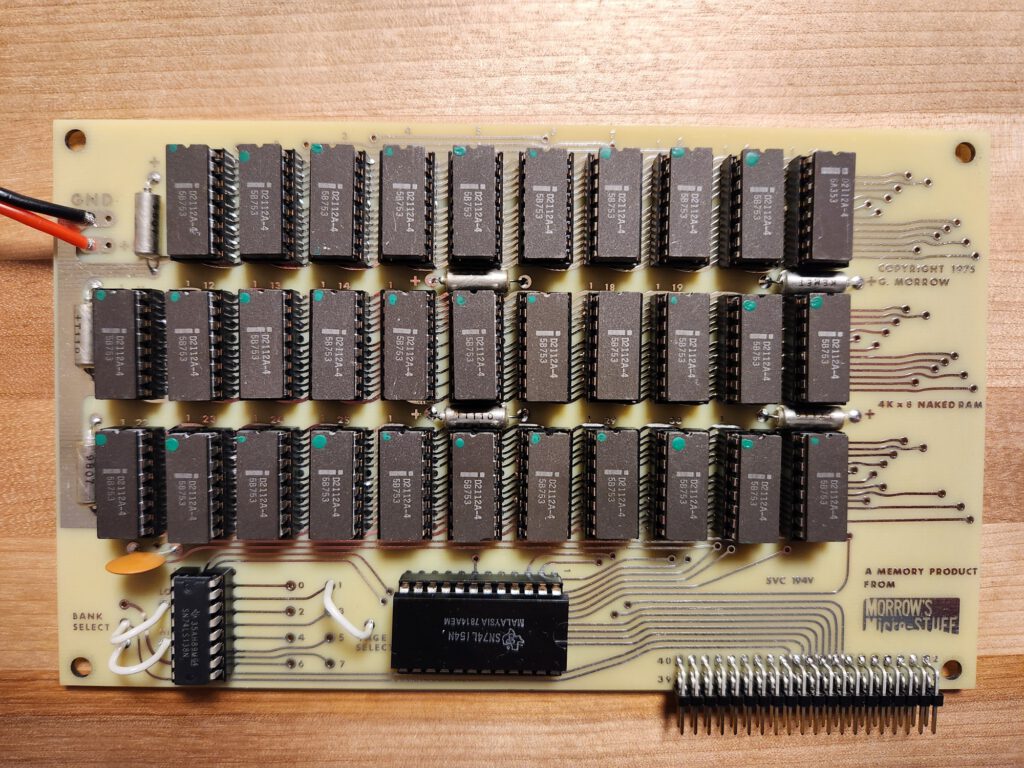
RAM card
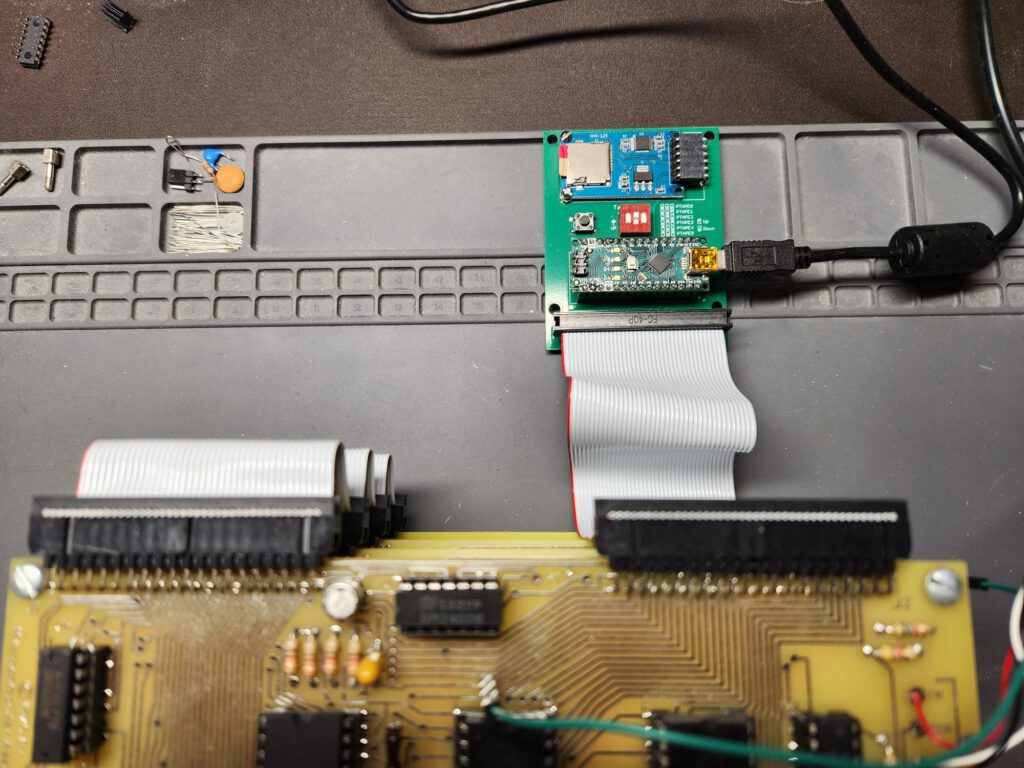
PTP Highspeed reader
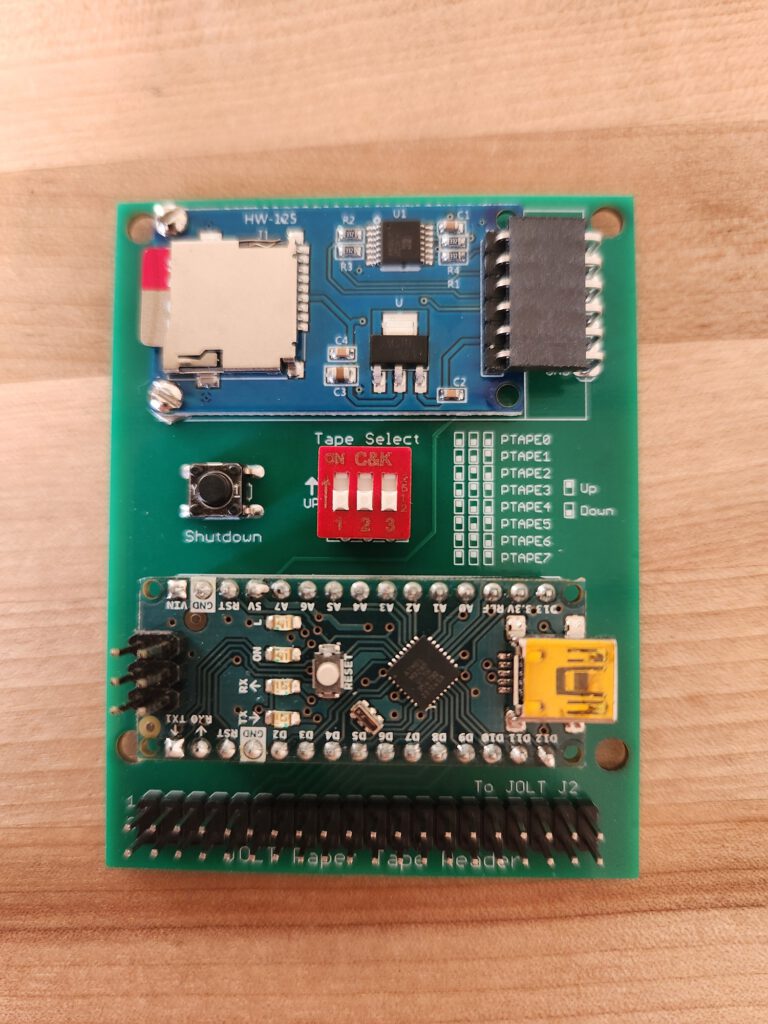 The text of the Tiny Basic enhancement:
The text of the Tiny Basic enhancement:
+++++++++++++++++++++++++++++++++++++++++++++++++++++++++
JOLT TinyBasic Enhancement ROM Notes
Scott LaBombard
August 2025
+++++++++++++++++++++++++++++++++++++++++++++++++++++++++
Just add the ROM at $D000. No SW/HW modifications are
required.
Commands added: MON, HSPTR, NEW, AND, OR, NOT, PEEK, POKE
ABS, FRE, FOR, NEXT, LOAD, and SAVE
+++++++++++++++++++++++++++++++++++++++++++++++++++++++++
AND
example: PRINT AND(125,589)
output: 77
OR
example: PRINT OR(125,589)
output: 637
NOT
example: PRINT NOT(43)
output: -44
ABS
example: PRINT ABS(-43)
output: 43
FRE
Prints free memory.
Usage: PRINT FRE(0)
HSPTR
Toggles between using the high speed paper-tape reader
or the console for input.
NEW
Clears the current program.
PEEK
Print the contents of the specified decimal memory address.
example: PRINT PEEK(8192)
POKE
Store the specified value at the specified memory address.
example: POKE 8192,44
result: value 44 will be stored at address 8192
PEEK
example: PRINT PEEK(8192)
output: 44
FOR/NEXT
Standard FOR/NEXT loop support. STEP is not supported,
however reverse order loops are:
FOR I=1 TO 10 FOR I=10 TO 1
PRINT I PRINT I
NEXT I NEXT I
END END
SAVE
Will save the current Basic program in MOS Tech Hex format
to the console. After entering the SAVE command, you will
be at the TIM monitor prompt.
After the SAVE command has finished, you will be at the
TIM monitor prompt. Just enter the TIM 'G' command to
return to TinyBasic (via the TinyBasic warm start entry
point, so the Basic program remains intact).
LOAD
Will load a Basic program in MOS Tech Hex format from the
console or the high speed paper-tape reader (depending on
which is selected for program input by the HSPTR command
or via the TIM monitor's H command).
After the LOAD command has finished, you will be at the
TIM monitor prompt. Just enter the TIM 'G' command to
return to TinyBasic (via the TinyBasic warm start entry
point, so the Basic program remains intact).
See also:
History of the TIM in the Jolt
Images of the Jolt
SM Baker AIM 65 projects
KIM 6530 replacement board
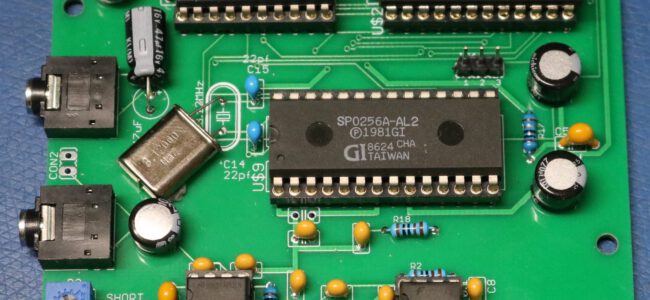
SM Baker AIM 65 projects
Scott Baker Rockwell AIM-65 Projects
A number of interesting AIM 65 projects found on SM Baker’s github page (thanks Scott for the latest updates)
Backplanes
Designs for 2 and 3 slot backplanes. Gerbers included.
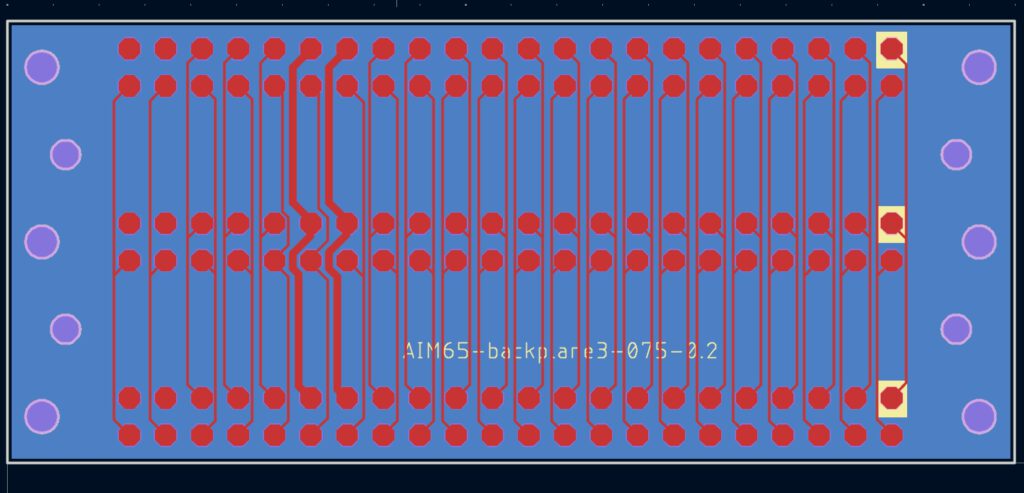
AIM-65 display adapter board
This is a display board based on the RM65 display board.
Supports up to 512KB of onboard ROM, which will be addressed into the 24KB address space starting at 0x9000. The 0xA000 range is left
empty for onboard peripherals. The four-position dipswitch controls which 32KB segment of the 512KB ROM is mapped.
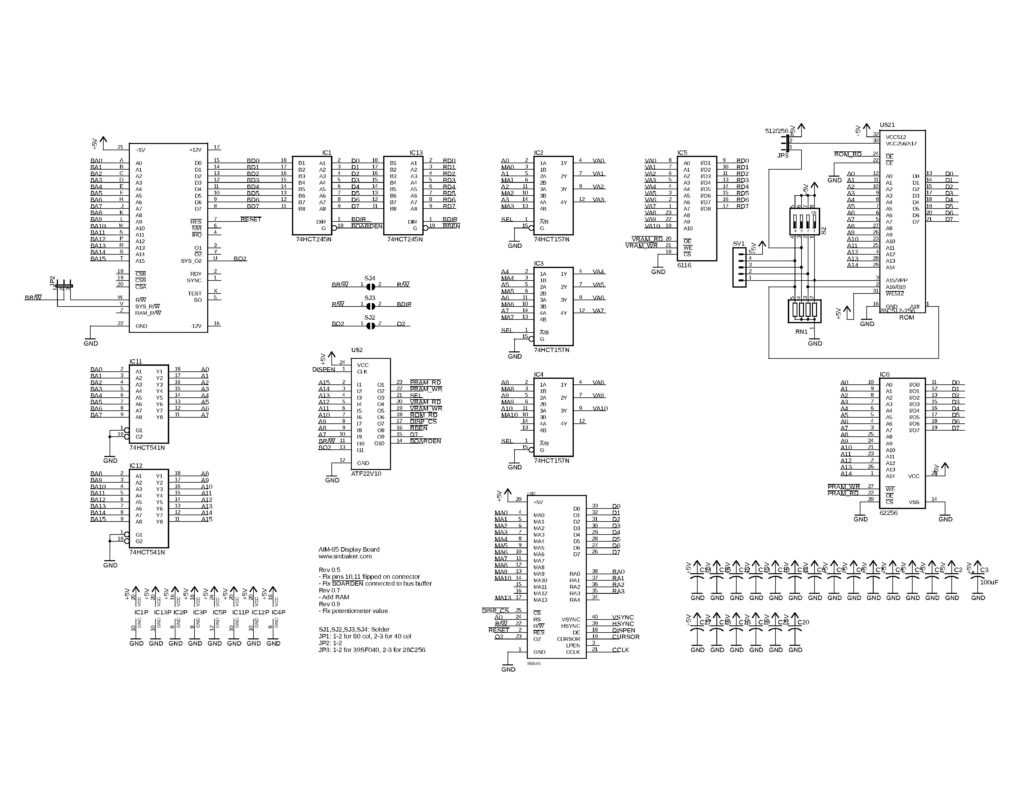

Multi-banked ROM file for display board
ROM image tools
tape-rs232-c1541
Application board for tape, RS232, and Commodore 1541 AH5050.
FDC based upon RM65 FDC
See also:
History of the TIM in the Jolt
Images of the Jolt
A Jolt Replica
KIM 6530 replacement board
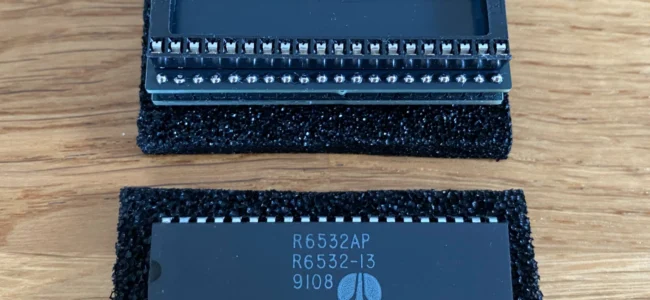
KIM 6530 replacement board
Christer from Sweden built an Eduardo Casino designed KIM-1 replica. And as we know, the 6530 replacement is an issue.
Not only for replica’s also for broken original KIM-1s.
So he designed his own, more compact original looking adapter.
He created this adapter because he wanted something that would work and look a little more unobtrusive than the other adapter boards that are available but still look somewhat genuine (no FPGA). The design is inspired by the Corsham 6530 replacement board but made way smaller by using SMD components and stacking the 6532 on top of the adapter board.
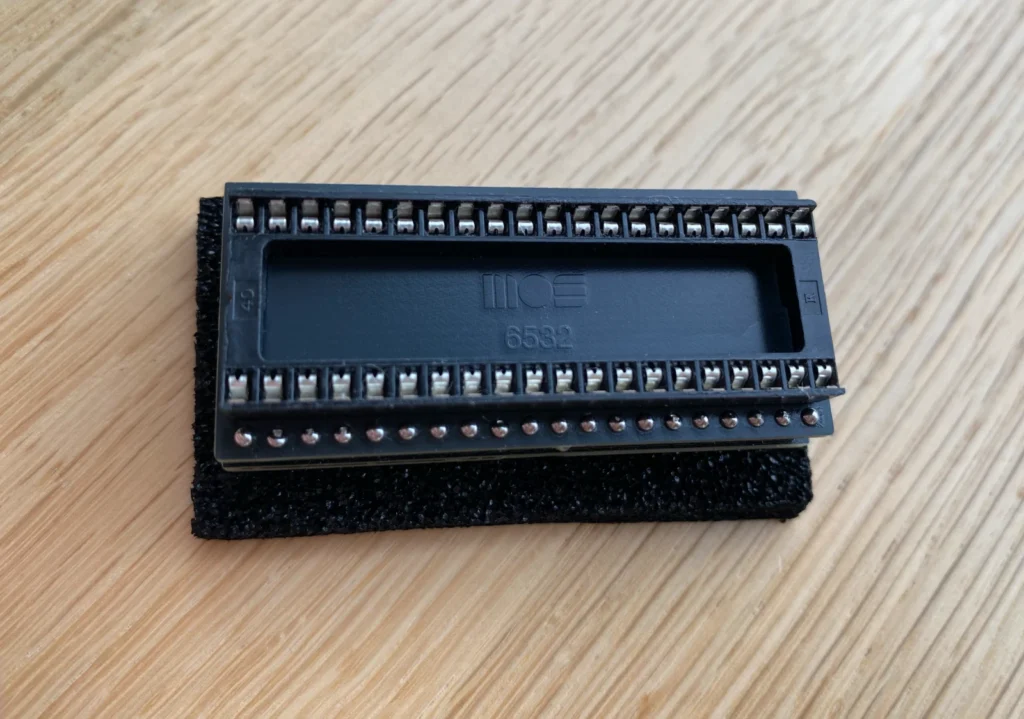
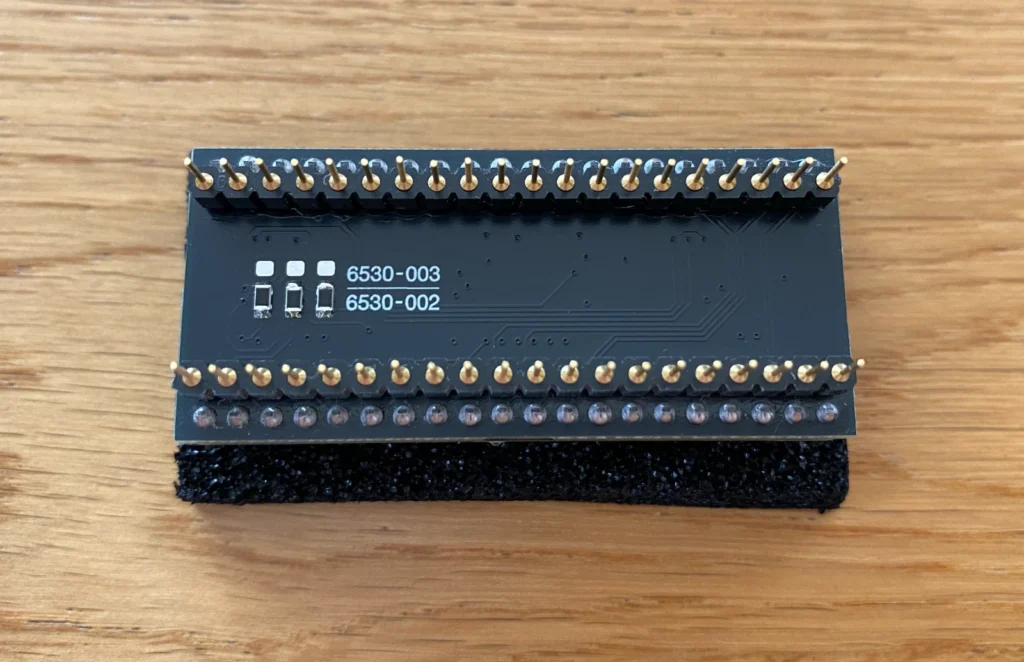
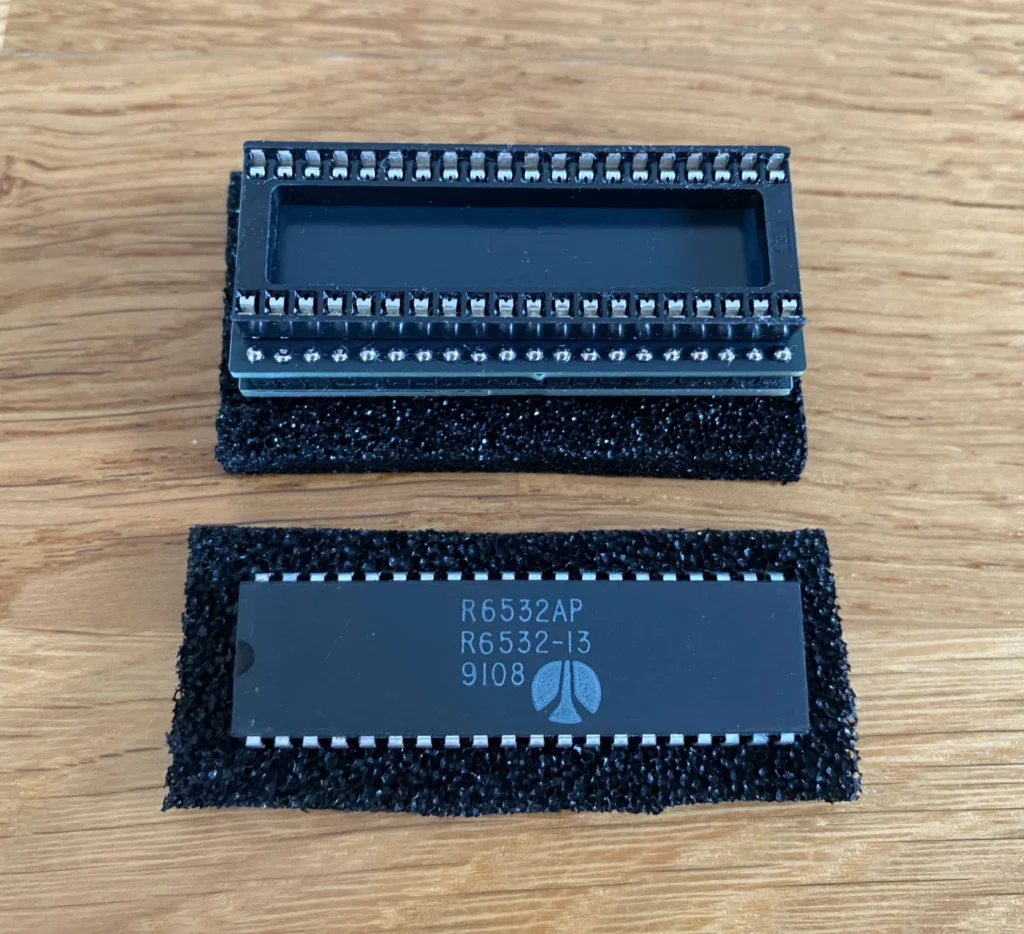
A newer design promised to be much more compact.
